News
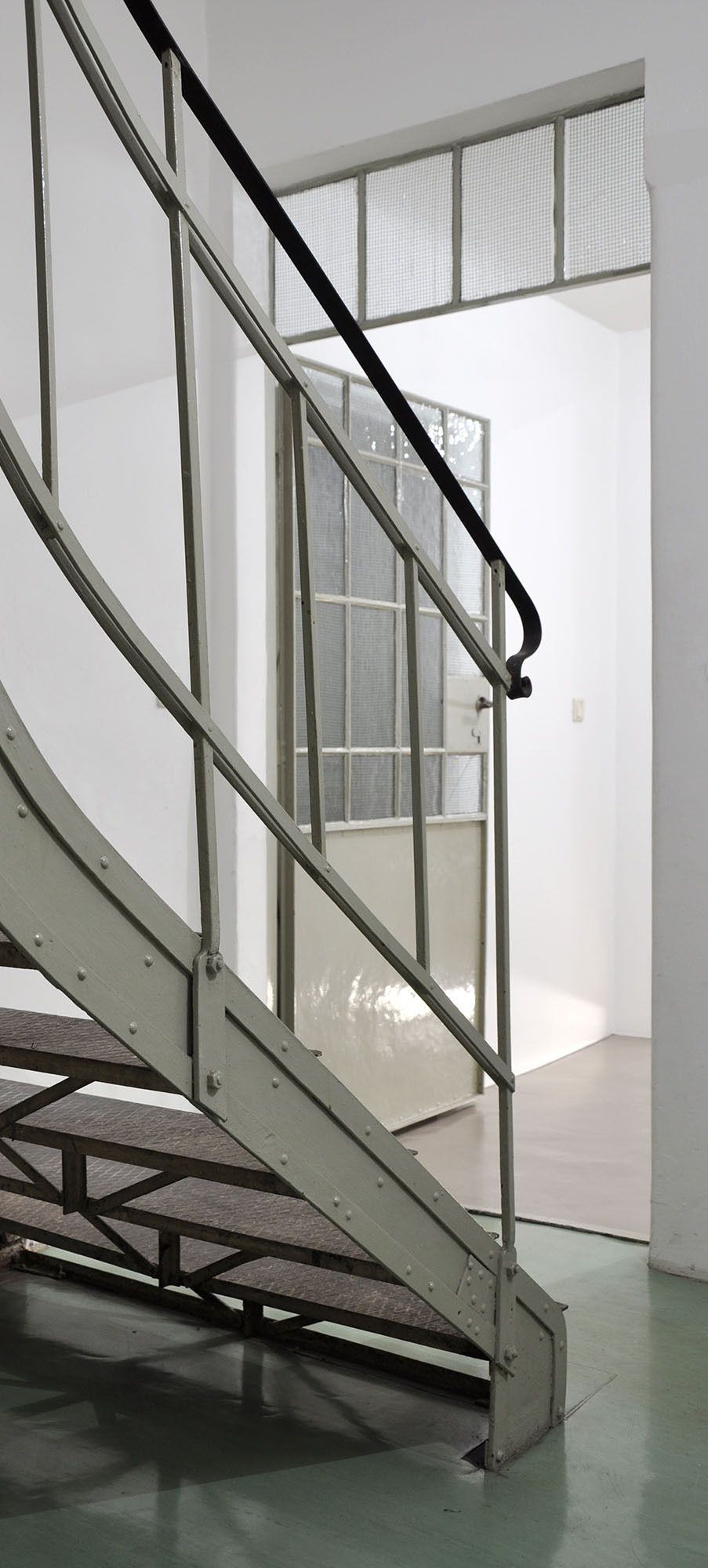
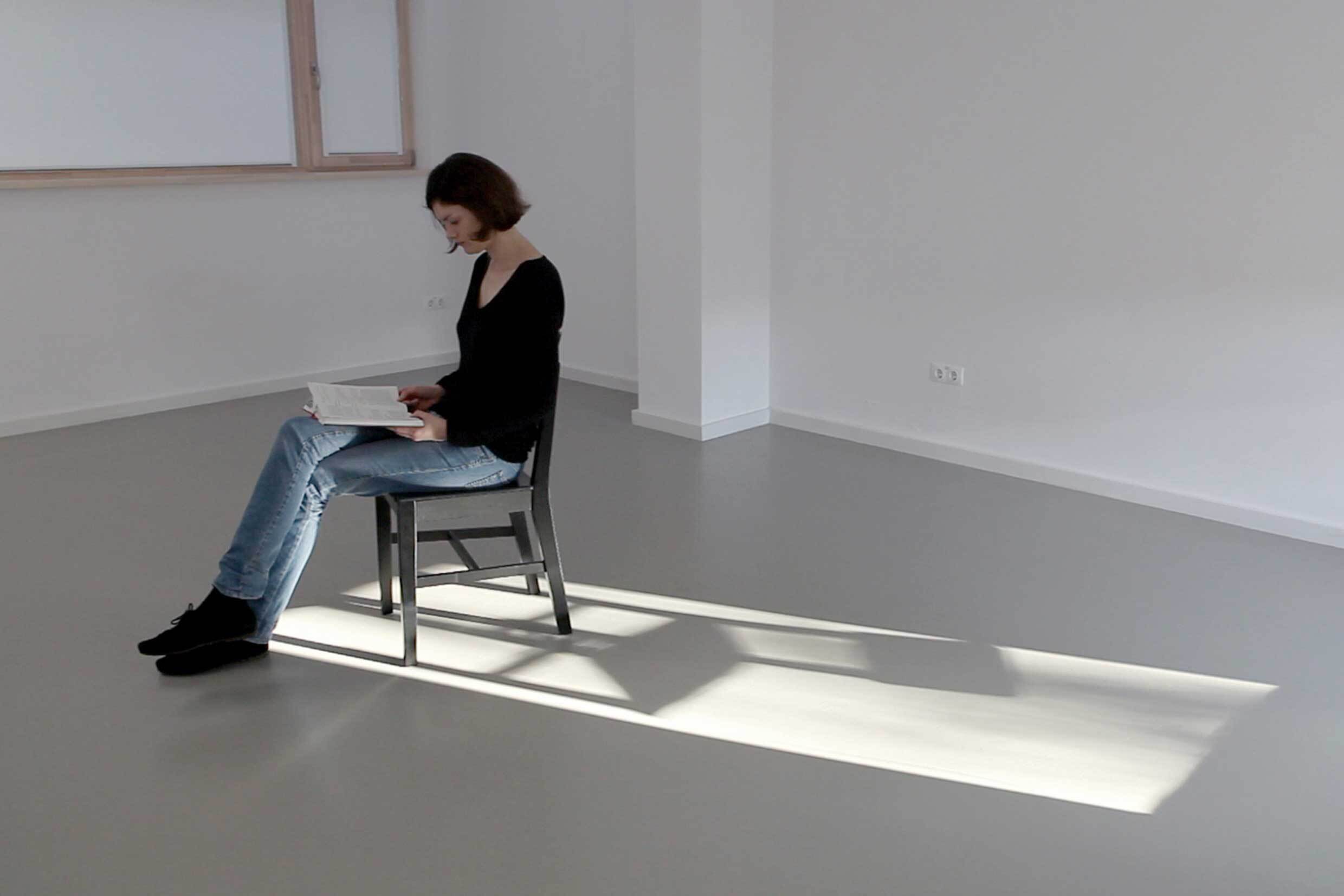
Liddy Scheffknecht, Reading woman, 2011
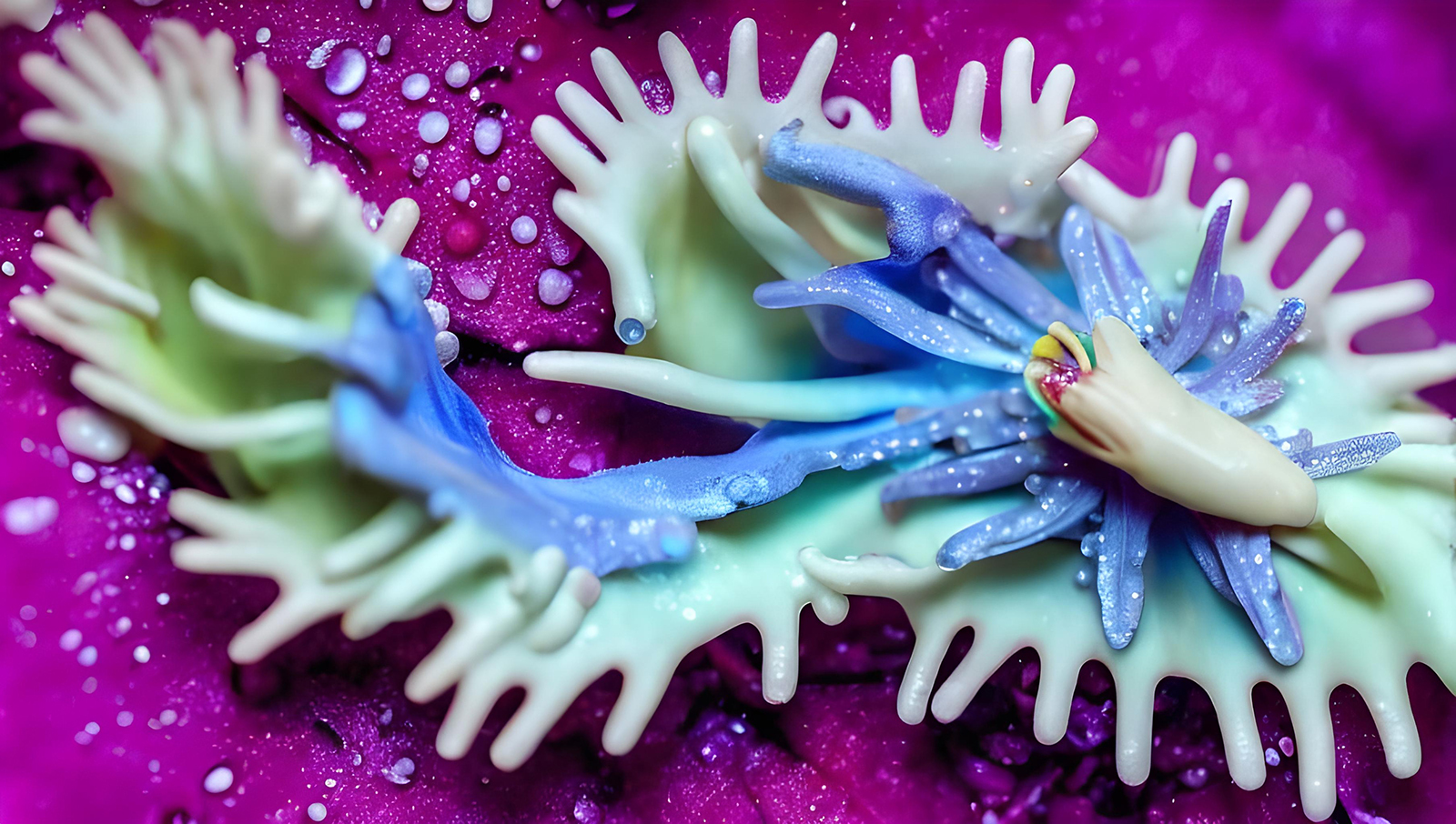
Agnieszka Polska, Book of Flowers, 2023
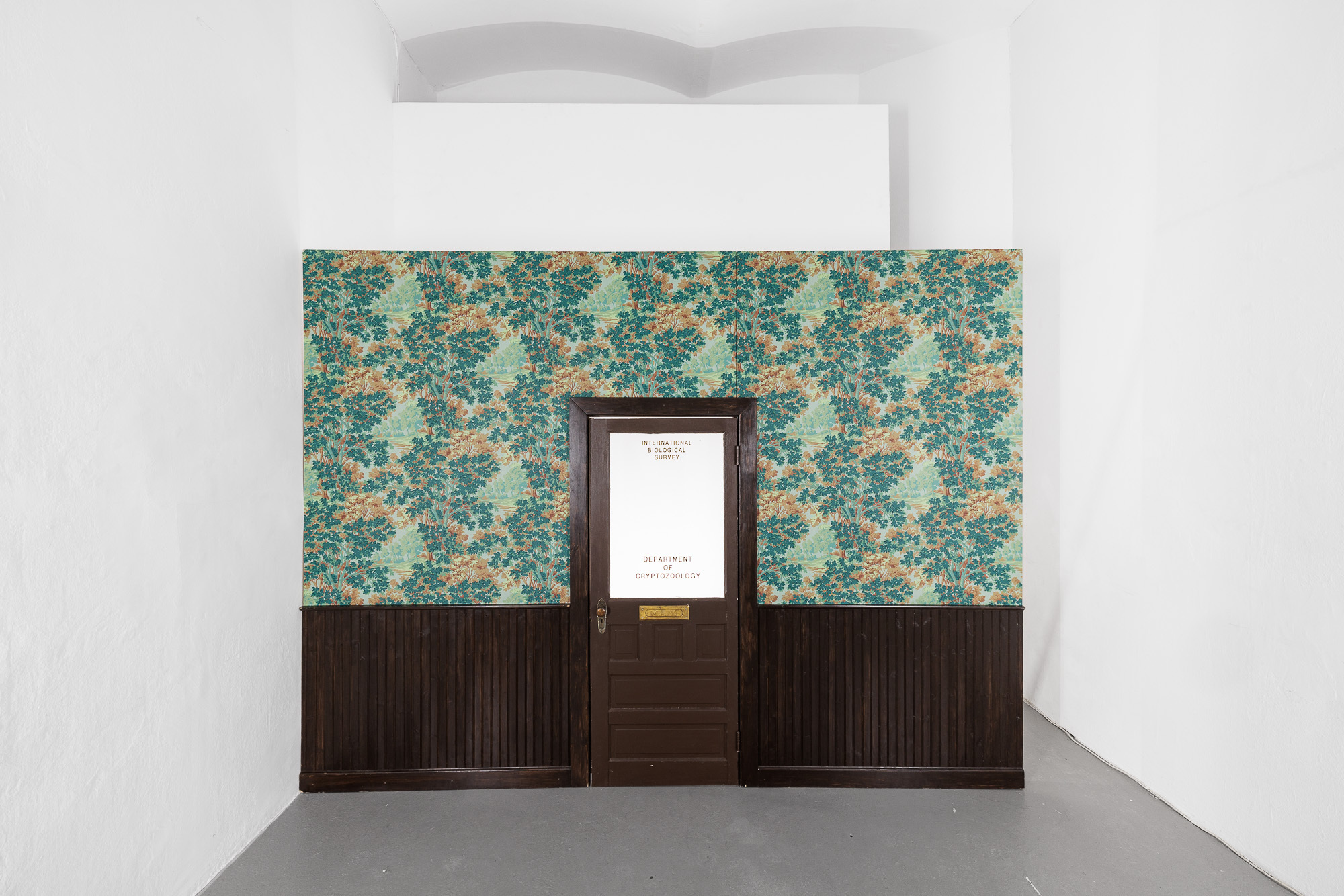
Mark Dion, Department of Cryptozoology, 2001

Katrina Daschner, Amazon Needles, 2024

Liddy Scheffknecht, Ranunculus asiaticu, 2023
Video (1:33 min), loop
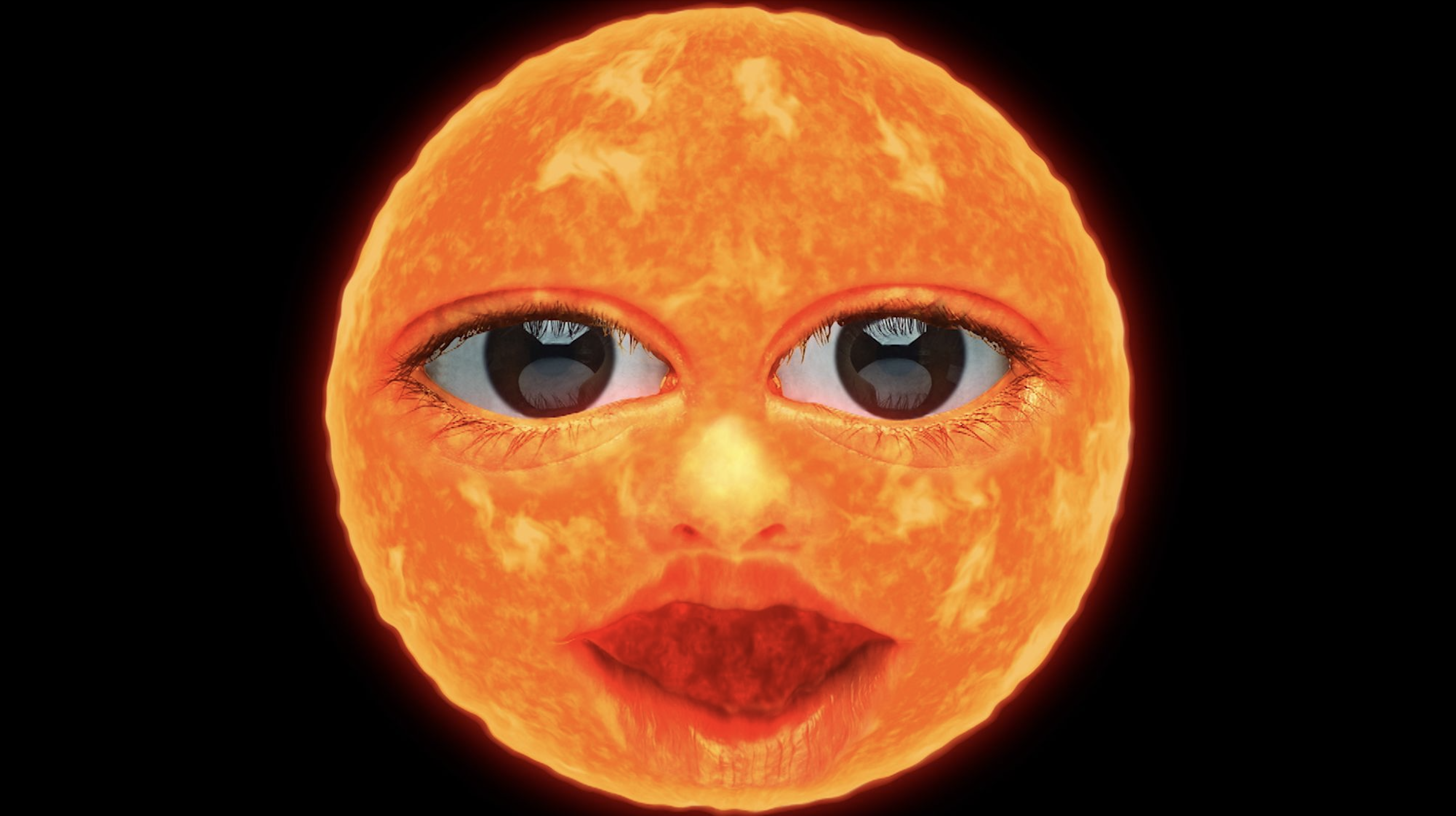
Agnieszka Polska, The New Sun (still), 2017
UHD video
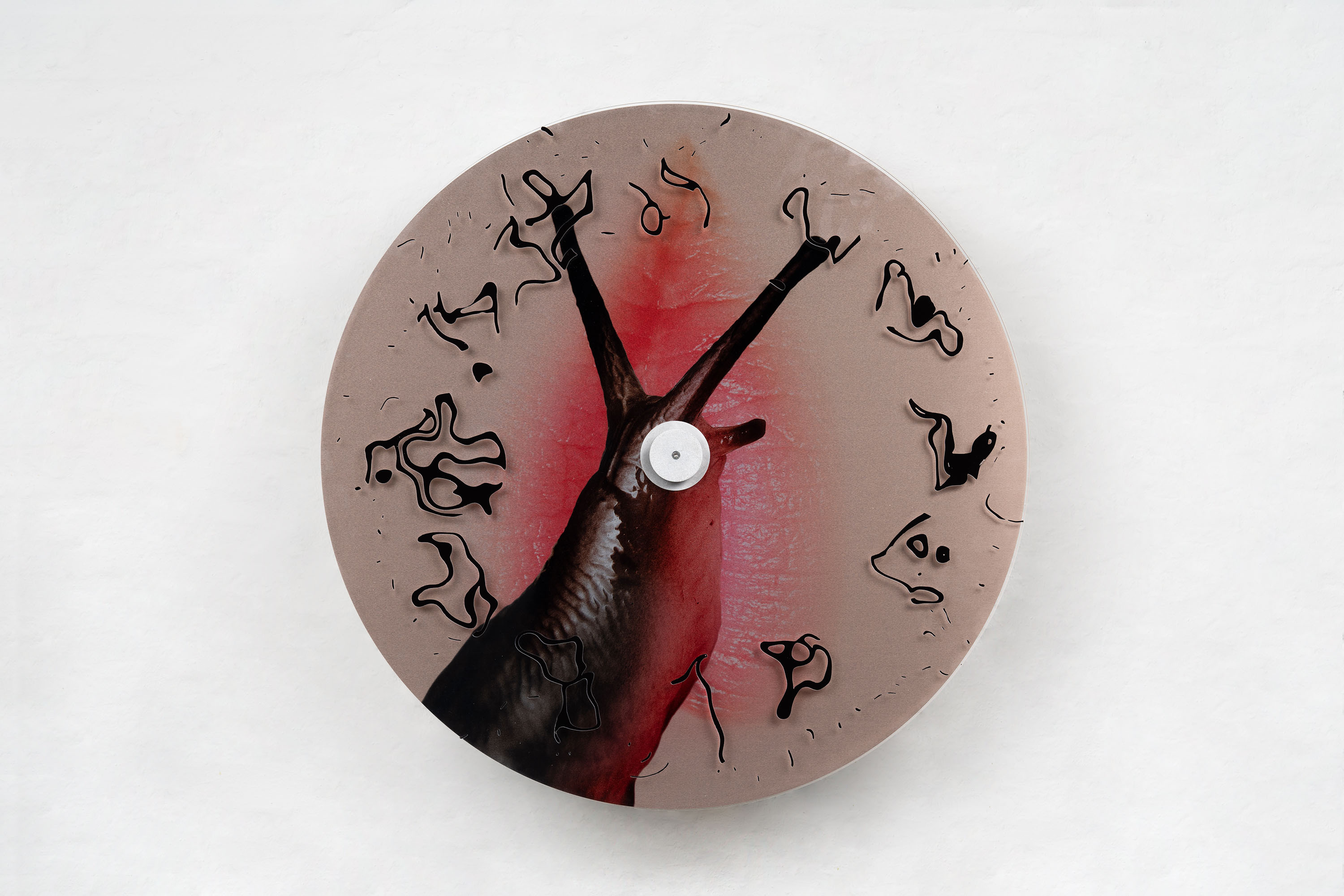
Agnieszka Polska, Braudel Clock - Snail, 2022
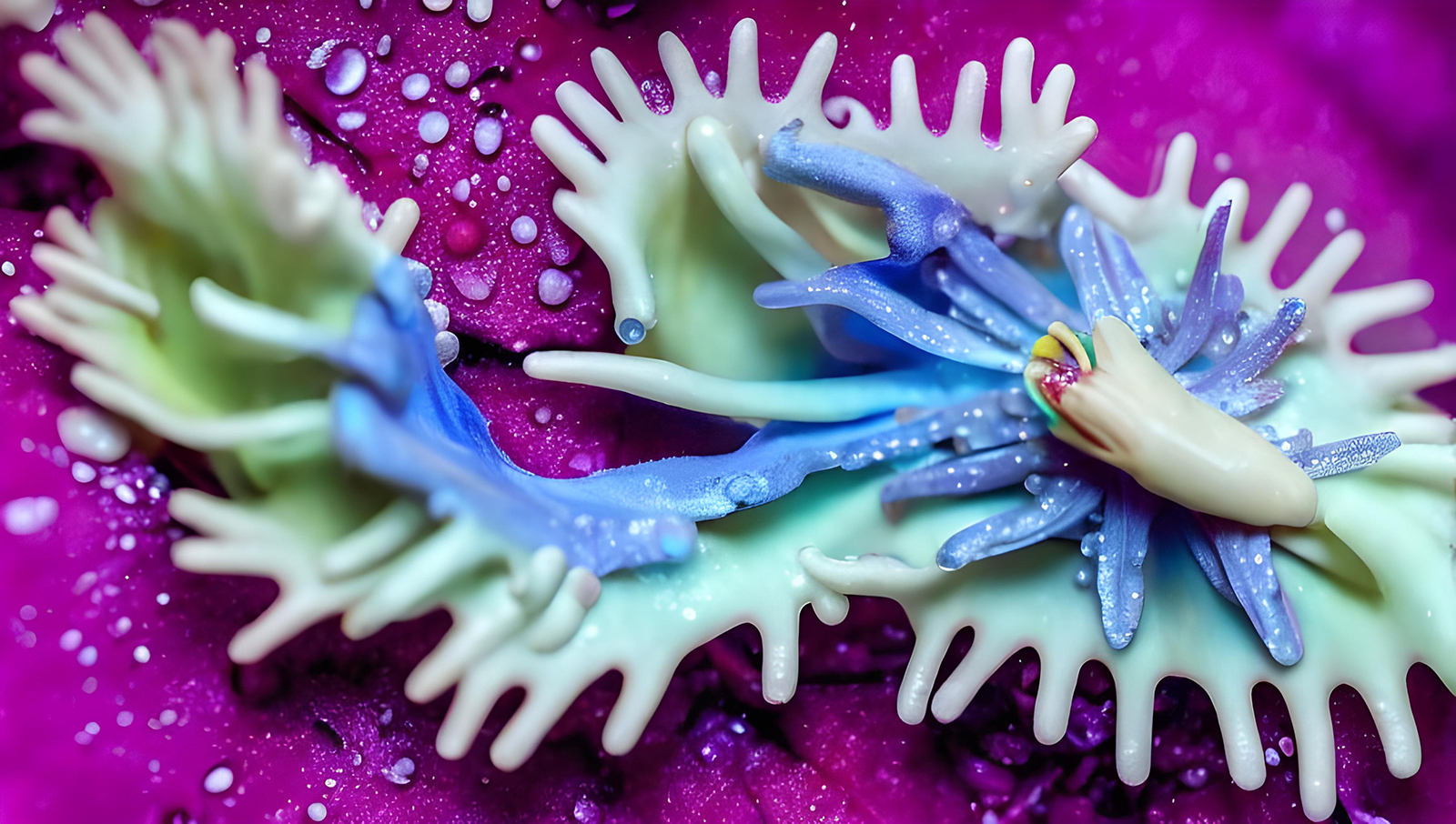
Agnieszka Polska, The Book of Flowers, 2023
HD Video
9min 55 sec.
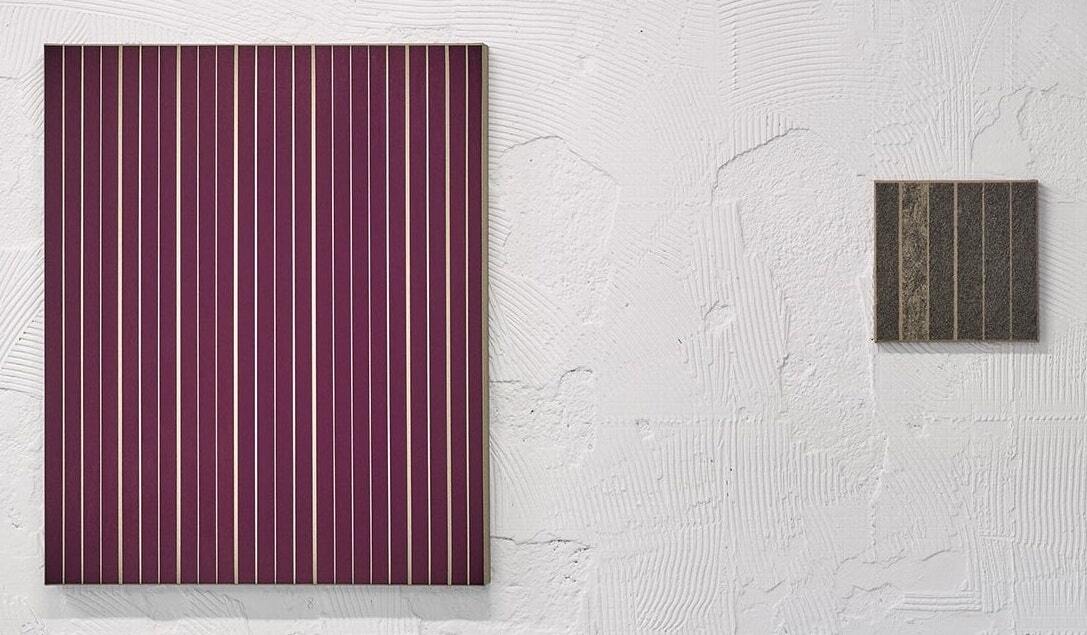
Photo: WEST. Fotostudio
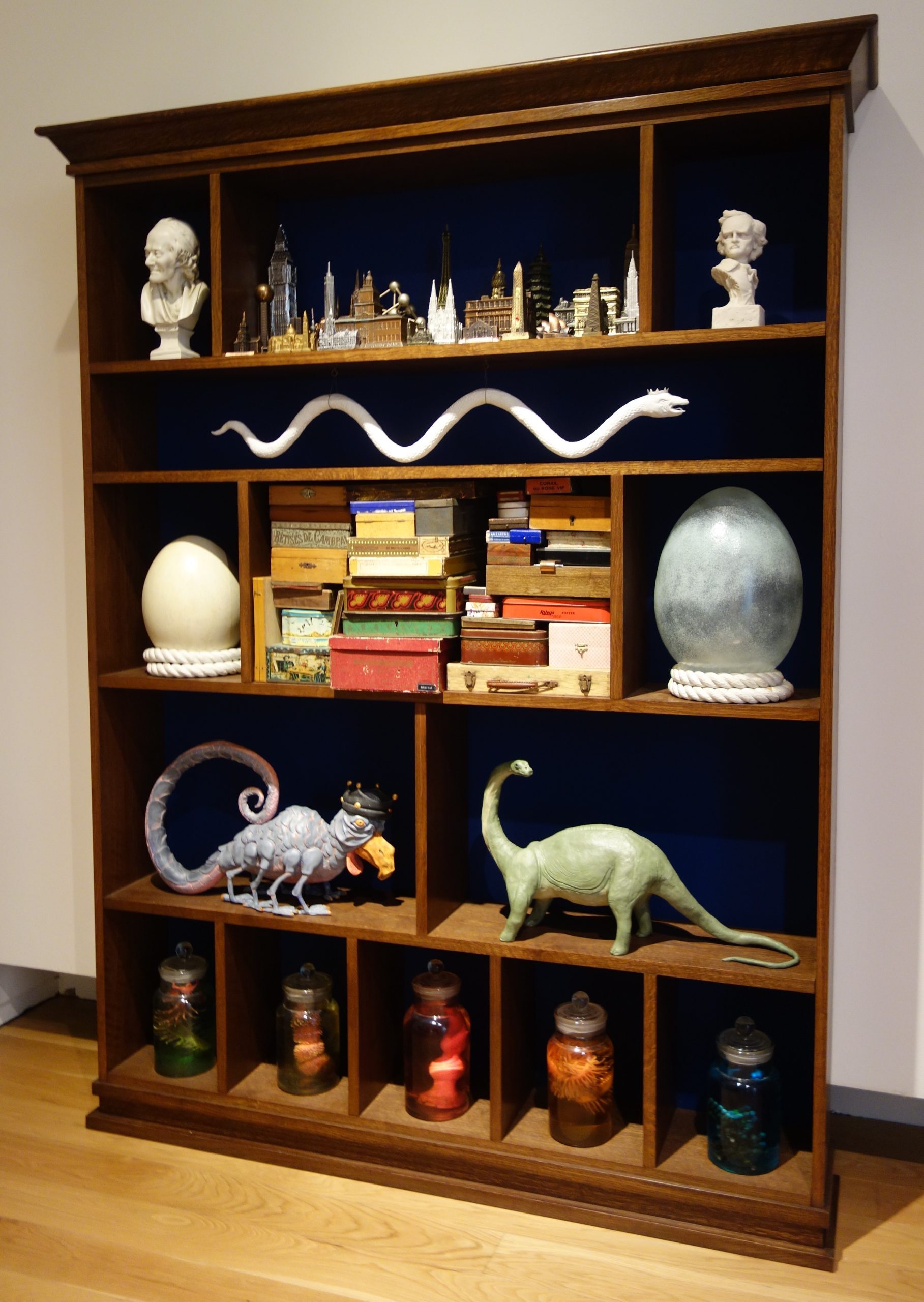
Mark Dion, Between Voltaire and Poe, 2016
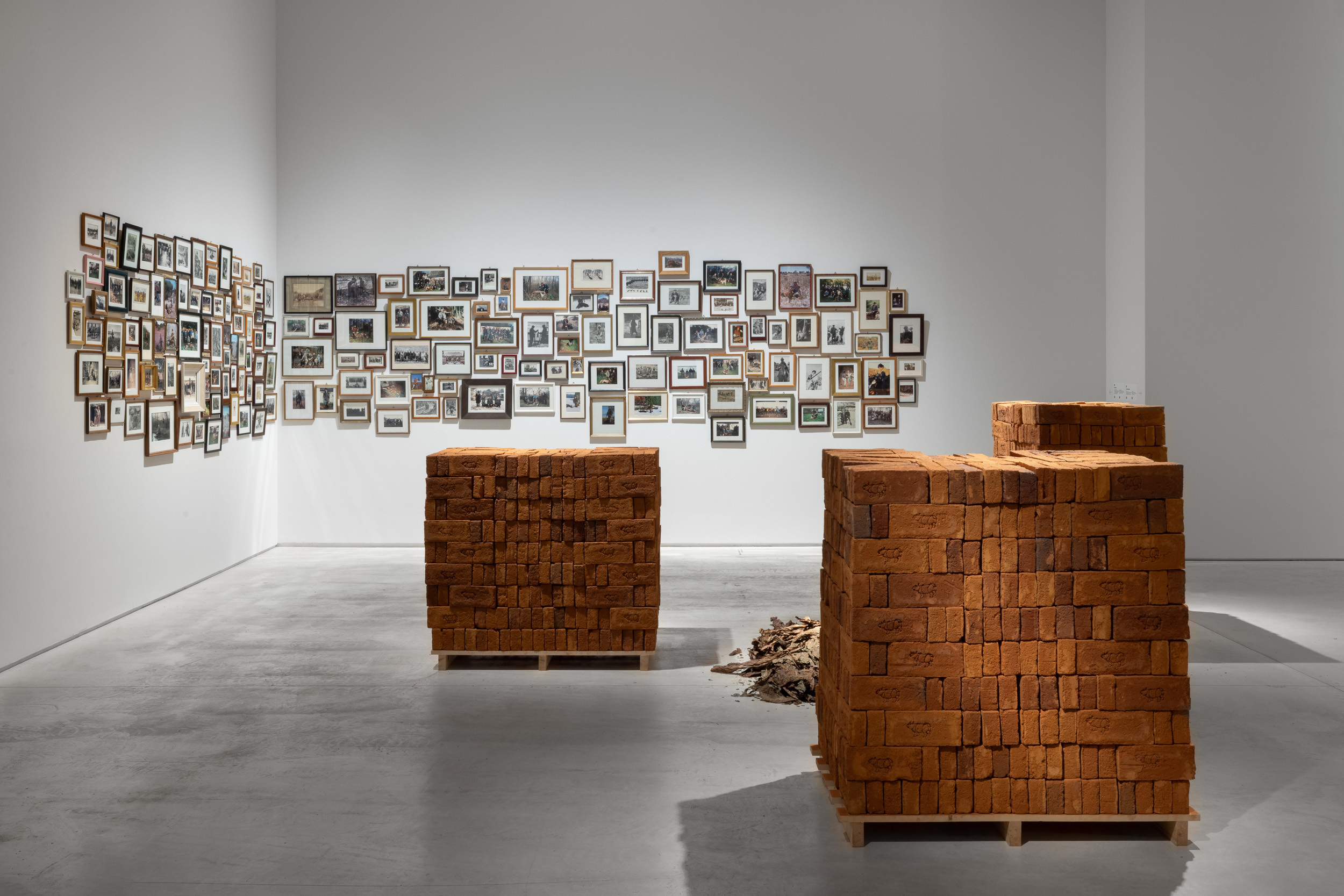
Mark Dion, Men and Game, 1998
Rossella Biscotti, Clara, 2016
Photo: Paris Tavitian

Mark Dion, Sea Life, 2011

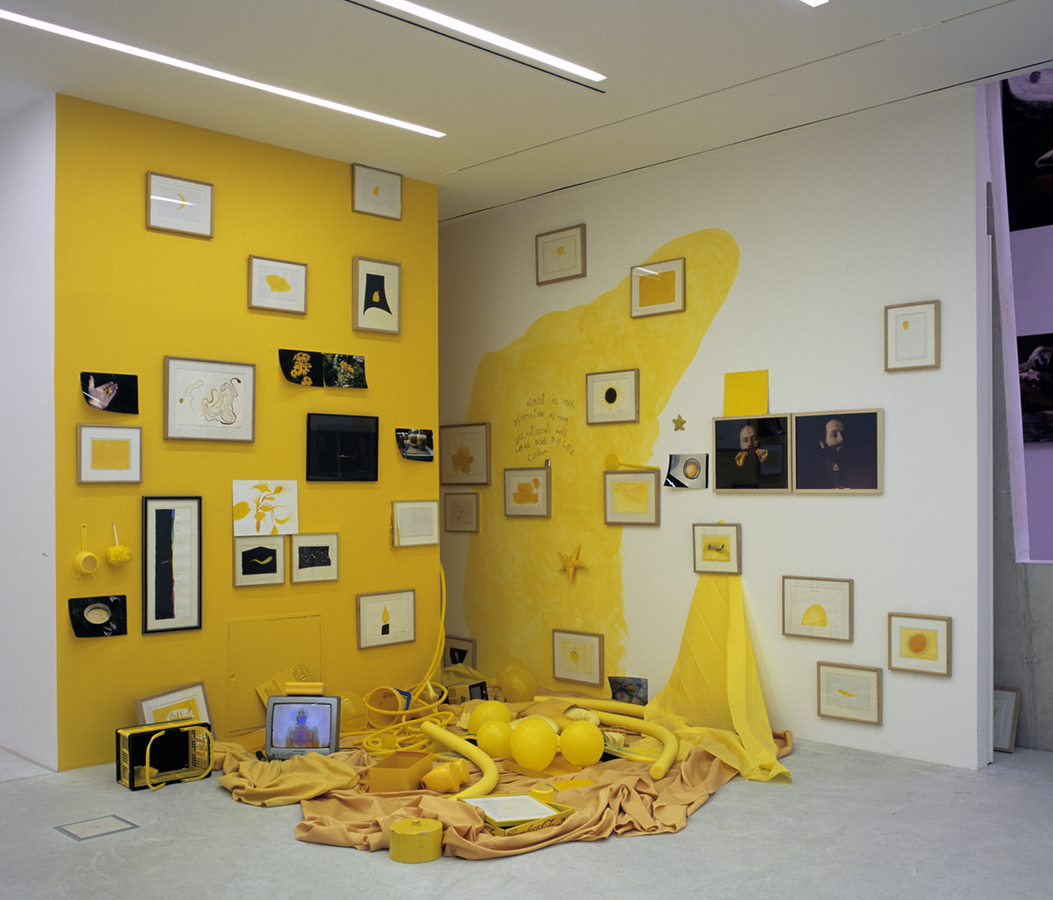
Nedko Solakov, Yellow, installation, part of the 2000+ArtEast collection, Moderna Galerija, Ljubljana

Liddy Scheffknecht, Pop Up (Living Room), 2025

Raymond Pettibon, No title (Let ugly darkness...), 1987
© Raymond Pettibon, Courtesy the artist and David Zwirner, Photo: Kerry McFate, Copyright Raymond Pettibon
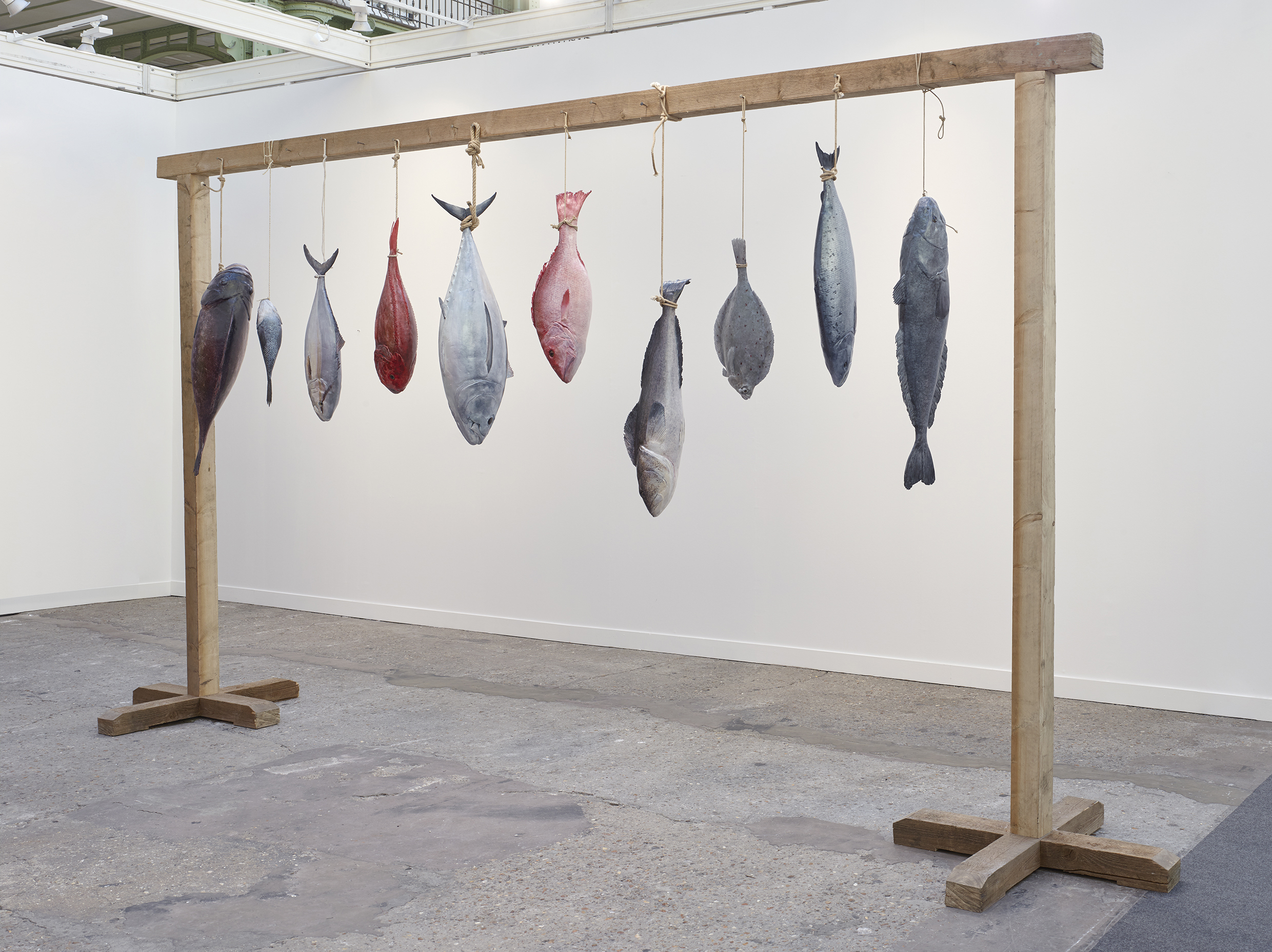
Mark Dion, The Fisheries, 2016
Photo: Simon Vogel
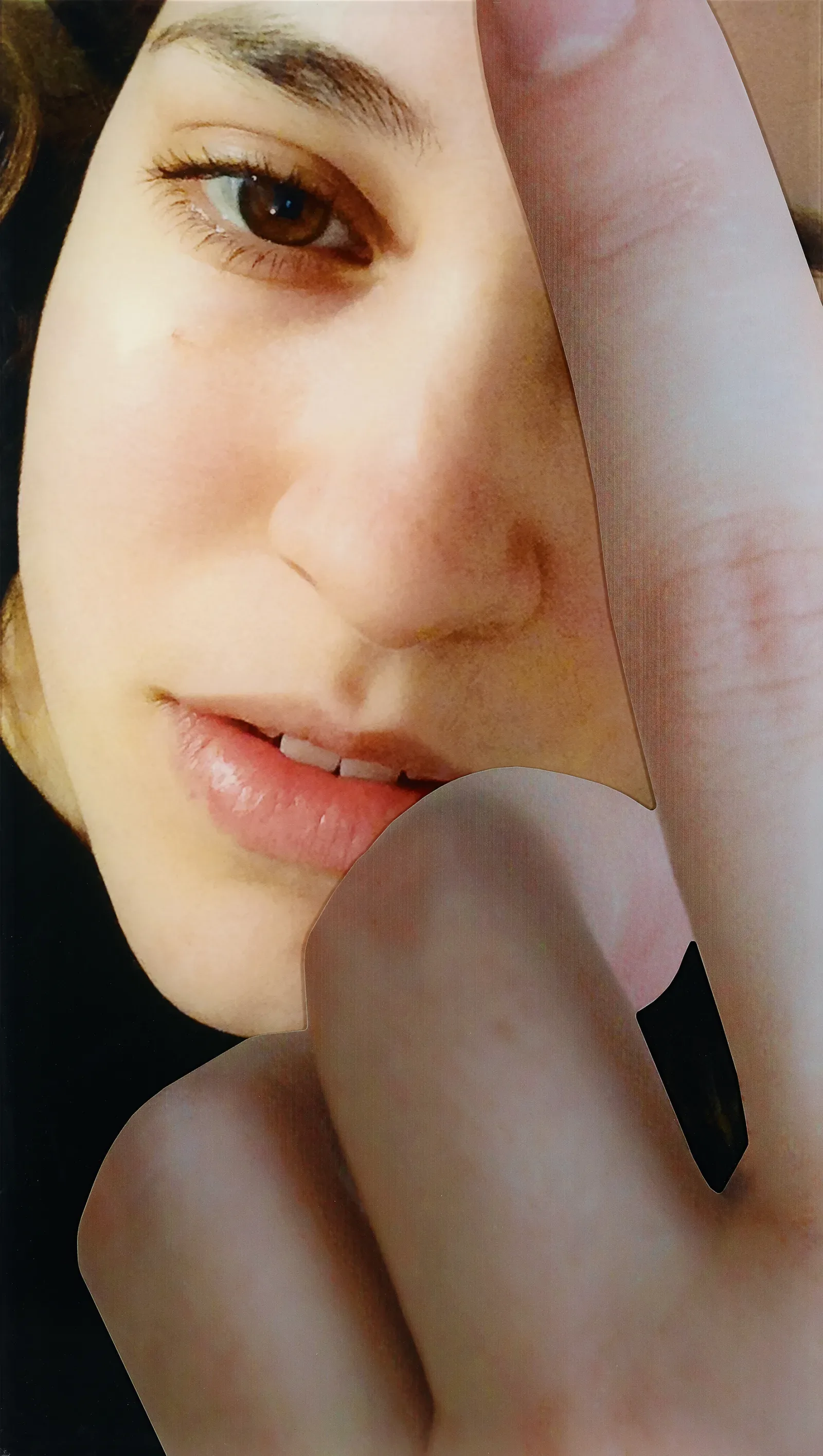
Rosa Rendl, Never Tired, 2015
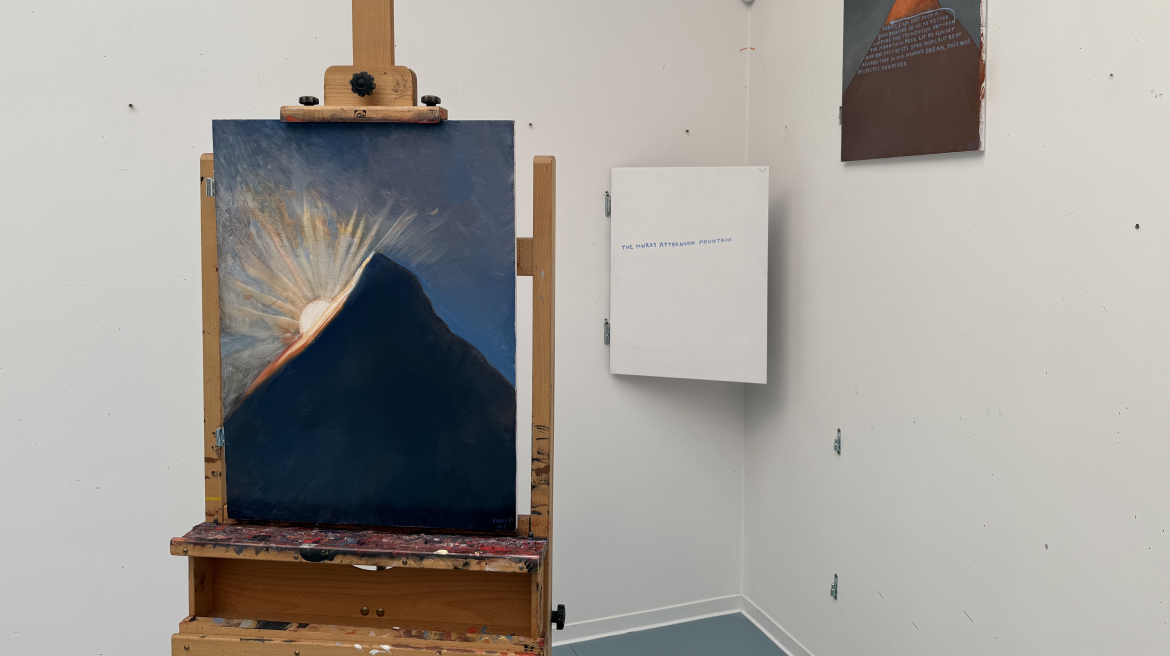
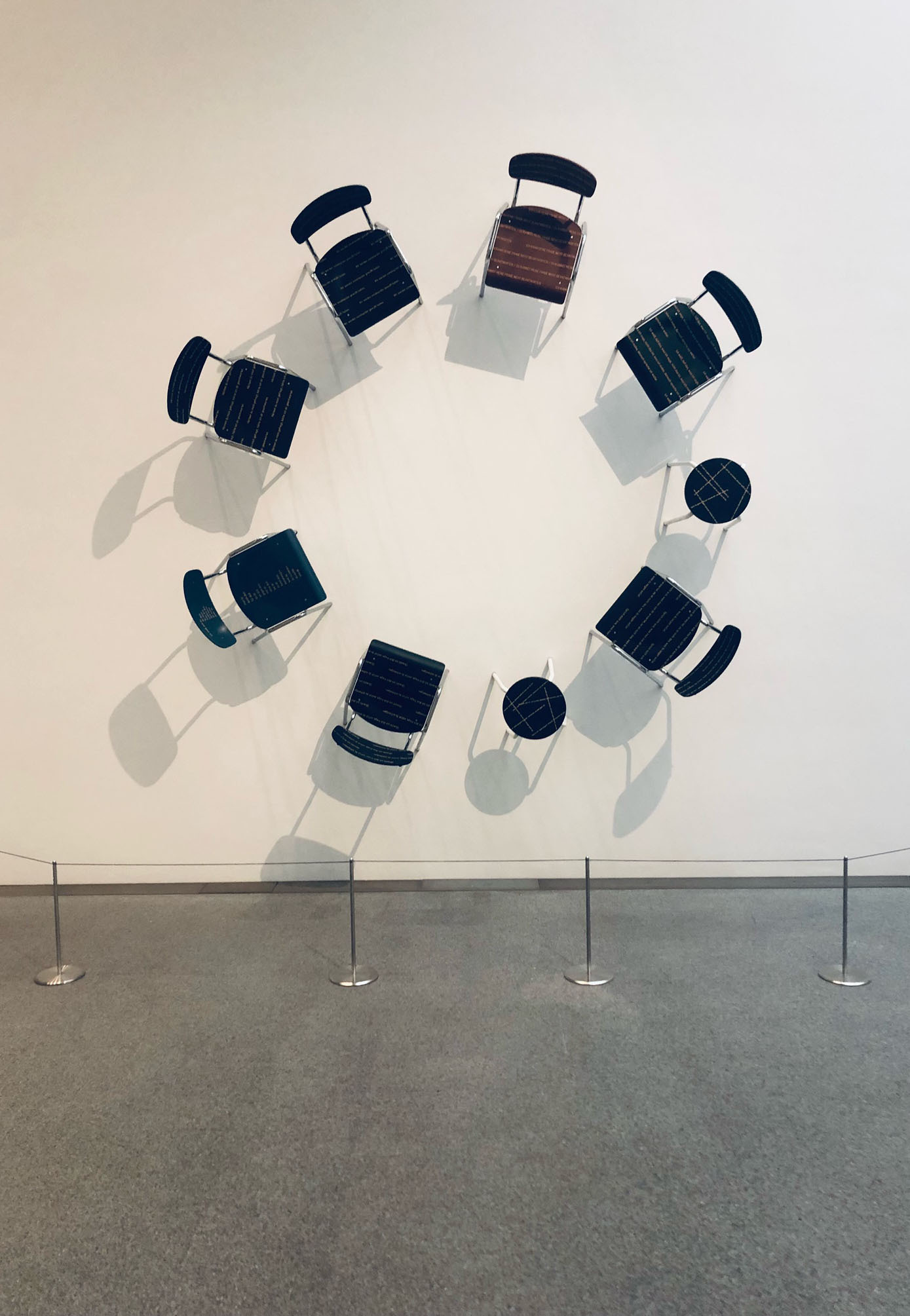
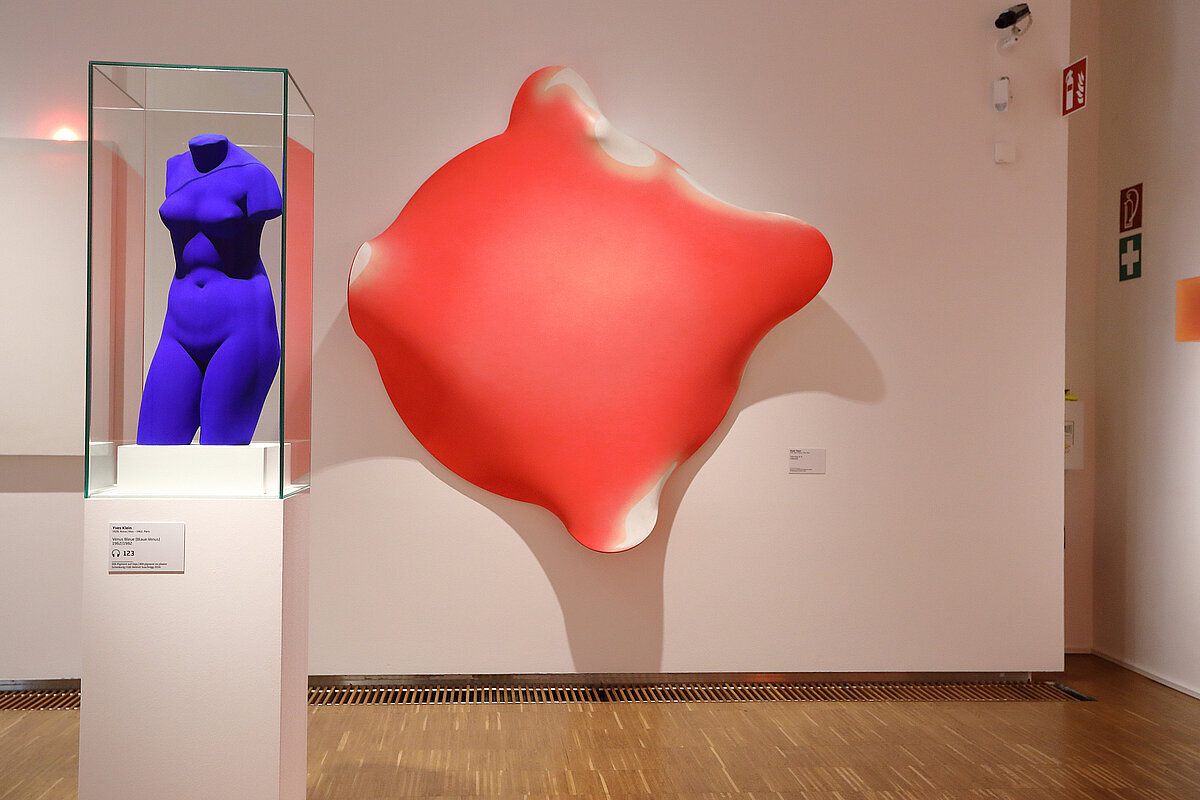
Erwin Thorn, Saturday at 8, 1968/69
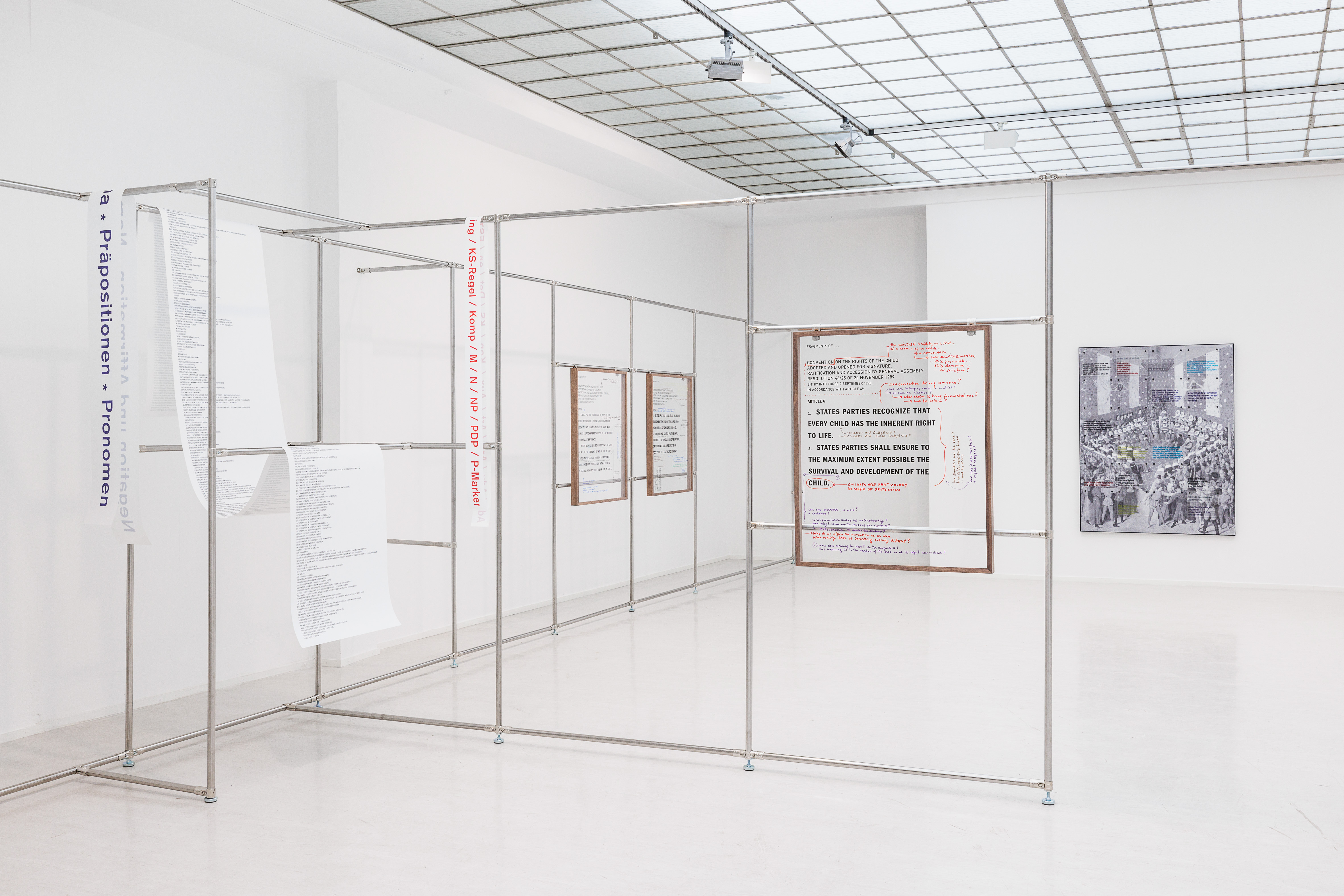
Thomas Locher, some notes... (barely written out), Ausstellungsansicht Lombardi—Kargl, Wien, 2024
UPCOMING: Liddy Scheffknecht @ Galerie im Alten Rathaus, Prien am Chiemsee | February 14, 2026

Liddy Scheffknecht, Reading woman, 2011
Not Nice Girls! - The female view in photographies from the SpallArt Collection
Opening: February 13, 2026
Exhibition: February 14 - April 12, 2026
Galerie im Alten Rathaus
Alte Rathausstraße 22
83209 Prien am Chiemsee
The gallery in Prien's Old Town Hall is showing the exhibition “Not Nice Girls. The Female Gaze in Photographs from the SpallArt Collection.” The title of the exhibition refers to a quote by American photographer Berenice Abbott, who sought out her original motifs there despite the dangers posed by New York's Lower East Side in the 1930s. As the world of photography has long been dominated by men, the exhibition in Prien focuses on the work of international and national female photographers. Over 180 works by Inge Morath, Vivian Maier, Lisette Model, Cindy Sherman, Beate Passow, and many others offer an in-depth look at identity, reflection, change, and a precise observation of scientific processes, urban life, and interpersonal encounters. The thematic juxtaposition with works by male photographers, also from the collection, is exciting and open to personal discovery.
Curated by Ute Gladigau
Artists: Berenice Abbott, Ansel Adams, Irene Andessner, Ursula Arnold, Atelier Manassè, Ellen Auerbach, Nomi Baumgartl, Ruth Bernhard, Isabella Berr, Sabrina Biancuzzi, Lillian Birnbaum, Luise Böker, Margret Bourke-White, Hugo Brehme, Julia Margret Cameron, Katherine Cooper, Elisabeth Czihak, Pierre Descamps, Sinje Dillenkofer, Robert Doisneau, Peter Dressler, Harold Eugen Edgerton, Eliot Elisofon, Siegfried Enkelmann, Alfred Erhard, Sissi Farassat, Franz Fiedler, Karin Fisselthaler, Christoph Fuchs, Caroline Gavazzi, Lotte Gerson-Colein, Isabell Gherardi, Ralph Gibson, Nan Goldin, Dorothee Golz, Alessa Grande, Ismene Grebe, Maria Hahnenkamp, Ilse Haider, Bob Hauser, Milos Heyduk, Candida Höfer, Horst P. Horst, Dieter Huber, Carol Huebner-Venezia, Hertha Hurnaus, Morath Inge, Karen Irmer, Lotte Jacobi, Ursel Jäger, Anna Jermolaeva, Anne Kaiser, Leo Kandl, Sanna Kannisto, Sandra Kantanen, Eeva Karhu, Peter Keetmann, André Kertész, Hannes Kilian, Angelika Krinzinger, Germaine Krull, Elke Krystufek, Marie-Jo Lafontaine, Isabelle Le Minh, Marko Lipus, Edgar Lissel, Maria Theresia Litschauer, Max Lohr
Valerie Loudon, Michelle Magdalena Maddox, Vivian Maier, Anja Manfredi, Elfriede Mejchar, Lisette Model, Claudio Monteccuco, Inge Morath, Barbara Morgan, Michaela Moscouw, Stefan Moses, Andreas Mühe, Abigail O'Brian, Arnold Odermatt, Riitta Päliväläinen, Nelli Palomäki, Martin Parr, Beate Passow, Manfred Paul, Alfred Pfau, Agnes Prammer, Bettina Rheims, Marc Riboud, Sheila Rock, Gabriele Rothemann, Charlotte Rudolph, Liddy Scheffknecht, Karin Schneider-Henn, Werner Schnelle, Maria Schott, Wolfgang Schriever, Gundula Schulze Eldowy, Jill Seer, Cindy Sherman, Luzia Simons, SofijaSilvia, Margherita Spiluttini, Ralph Steiner, Thomas Struth, Josef Sudek, Rudolf Sulke, Miriam Tölke, VALIE EXPORT, Walter Vogel, Wilhelm von Gloeden, Martin Waldbauer, Sabine Weiss, Robert Werling, Michael Wessely, Edward Weston, Kim Weston, Francesca Woodman, Robert Zahornicky, Pernilla Zettermann, George S. Zimbel and Bettina von Zwehl
UPCOMING: Agnieszka Polska @ Kunsthaus Graz | March 20, 2026

Agnieszka Polska, Book of Flowers, 2023
30% Dandelion
Opening: March 20, 2026
Exhibition: March 21 - November 8, 2026
Universalmuseum Joanneum Kunsthaus Graz, Graz
The dandelion—as a flower, botanical plant, cultural symbol, and aesthetic phenomenon—possesses strength and quiet courage. Unobtrusive yet persistent, it adapts radically, returns, and resists. Under the title 30% Dandelion, the exhibition at the Kunsthaus brings together more than 20 contemporary artistic positions dedicated to the flower and its direct connection to humans—humans share 30% of their genetic material with the flower. In the works, we encounter the melancholy of a crumbling present.
At the same time, they take us on a journey into the familiar, beautiful, and intoxicating aesthetics of the flower and its exuberant expression of vitality. The focus is on recurring arrival, symbiotic cooperation, and farewell: poetic, political, and ecological.
The dandelion serves both as a model of adaptive strength and as a language spoken by all. In the spirit of floriography – the historical language of flowers – it becomes a transcultural gesture of recognition and communication: overlooked, but persistent and beautiful. As a flower of the margins, meadows and gardens, it offers a symbolic vocabulary that resists normative constraints, speaks in everyday languages, possesses healing powers and, in the radiant colour of the sun, entices the insects that fertilise it. The exhibition is based on the concept of ‘entanglements’ as well as on philosophical and ecological framework concepts of ‘aesthetic offering’ (Elaine Scarry) and ‘critical hybridity’ – and is also linked to the exhibition on the upper floor, Hybrid Pleasures. Helen Chadwick supported by Liesl Raff – in which the productive and provocative forms of a polyphonic hybridity become the subject. The ‘entanglements’ are, as formulated by thinkers such as Donna Haraway, Karen Barad and Timothy Morton, just as politically and colonially charged as they are cross-genre, cross-gender and intrinsically seen. When Haraway writes, ‘We will be together or not at all,’ it is important to trace the connections and use the insights for a just future.
Amidst ecological crises, colonial aftermaths and digital acceleration, ‘30% Dandelion’ calls for new forms of attention – attuned to what grows slowly, demands time and returns quietly. The flower, but also the dandelion with its spreading seeds, its natural healing power and its communal flourishing, embodies this principle of an ethical way of life based on coexistence
With works by Anita Fuchs, Spencer Finch, Barbara Frischmuth, Joiri Minaya, Nina Schuiki, Claudia Larcher, Jonas Mekas, Marwa Arsanios, Anna Ridler, Agnieszka Polska and others, the exhibition unfolds as a polyphonic exploration of the flower, its attribution and power of attraction.
https://www.museum-joanneum.at/en/kunsthaus-graz/our-programme/exhibitions/event/30-dandelion-1
UPCOMNIG: Mark Dion @ Heidi Horten Collection | March 26, 2026

Mark Dion, Department of Cryptozoology, 2001
ANIMALIA. ON ANIMALS AND HUMANS
Opening: March 26, 2026
Exhibition: March 27 - August 30, 2026
Heidi Horten Collection, Vienna
With the exhibition Animalia. On Animals and Humans, the Heidi Horten Collection explores the complex relationship between humans and animals. The term Animalia, borrowed from biology, serves as the guiding principle for a critical examination of how humans treat animals, reflected in over 100 works of art from the 20th and 21st centuries.
Derived from anima, the Latin word for breath or soul, the term Animalia, coined by naturalist Carl von Linné (1707–1778), encompasses both humans and animals. In contrast to this model of equality, humans' treatment of animals is characterized by a clear hierarchy.
As the supposed “pinnacle of evolution,” as beings of reason that rise above the animal world, humans assign ambivalent roles to animals. Artistic representations that make these different attributions visible say a lot about humans themselves, allowing conclusions to be drawn about their self-image and methods of projection. Thus, humans are already present in every image of animals—even when they are not part of the representation.
The exhibition explores the question of which social and historical structures are inscribed in representations of animals. They range from the idea of “man's best friend” to the humanization and objectification of animals to their exploitation. At the same time, the exhibition allows us to view ANIMALIA as a thought experiment—beyond a shared biological category—as a principle of a shared model of life that considers animals as fellow creatures and co-actors.
Artists: Karel Appel, Cory Arcangel, Miquel Barceló, Georg Baselitz, Dominika Bednarsky, Cosima von Bonin, Rembrandt Bugatti, Marc Chagall, George Condo, Mark Dion, Jean Dufy, Gerhart Frankl, Helene Funke, Matthias Garff, August Gaul, Gelatin, Lena Henke, Damien Hirst, Edgar Honetschläger, Hörner/Antlfinger, Anna Jermolaewa, Birgit Jürgenssen, Sanna Kannisto, Gülsün Karamustafa, Erika Giovanna Klien, Stanislaw Kubicki, François-Xavier Lalanne, Maria Lassnig, Maria Legat, Fernand Léger, Roy Lichtenstein, Angelika Loderer, Constantin Luser, Franz Marc, Sarah Morris, Ulrike Müller, Meret Oppenheim, Michèle Pagel, Yan Pei-Ming, Mimmo Paladino, Pablo Picasso, Lili Reynaud-Dewar, Germaine Richier, Corinne L. Rusch, Kristof Santy, Anne Speier, Margherita Spiluttini, Curt Stenvert, Melanie Thoeni, Philipp Timischl, Wilhelm Trübner, Not Vital, Andy Warhol.
UPCOMING: Katrina Daschner @ Belvedere | June 26

Katrina Daschner, Amazon Needles, 2024
STELLPROBE - Collection acquisitions from the last decade, in a display by Heimo Zobernig
Opening: June 26, 2026
June 25, 2026 - October 4, 2026
Belvedere Vienna
In the summer of 2026, Belvedere 21 will present a large-scale exhibition throughout its ground and upper-floor galleries, showcasing works acquired for the Belvedere collection over the past ten years. In keeping with the profile of the collection, artworks from all periods will be brought together in a spatial installation by Heimo Zobernig—a kind of Stellprobe, a staging rehearsal of sorts.
Collecting lies at the heart of the museum’s mission. The targeted expansion of its holdings— spanning from medieval to contemporary art—follows programmatic criteria derived from the collection’s profile and a critical reassessment of art history, particularly with regard to gaps and desiderata. Thus, a key emphasis has been—and continues to be—the substantial expansion of the presence of women artists and other historically underrepresented positions within the collection.
This exhibition reflects these priorities and features historical and contemporary works in a display conceived specifically for the occasion by artist Heimo Zobernig.
Curated by Stella Rollig and Luisa Ziaja.
Assistant Curators: Johanna Hofer and Katarina Lozo
Artists: Katrina Daschner, Heimo Zobernig, Donno Huanca, Margot Pilz, Tess Jaray and others.
Liddy Scheffknecht @ Forum für Fotografie | through December 20

Liddy Scheffknecht, Ranunculus asiaticu, 2023
Video (1:33 min), loop
In the Lights of Shadow
Opening: November 1, 4 pm
Exhibition: November 3 - December 20, 2025
Forum für Fotografie, Köln
Schönhauser Str. 8
50968 Cologne
Light and shadow are the elemental forces of photography – they tell stories, shape moods, and reveal the unseen. The exhibition In the Lights of Shadows presents an exceptional selection from the SpallArt Collection, exploring the interplay of these two poles as the origin of every photographic narrative.
From classics such as Edward Weston, Ansel Adams, and Berenice Abbott to contemporary voices like Michelle Magdalena Maddox and Liddy Scheffknecht, the show spans more than a century of photographic art. The works reveal how light itself becomes a subject – a carrier of emotion, structure, and time.
Artists:Berenice Abbott, Ansel Adams, Walter Bartsch, Werner Bischof, Josef Breitenbach, Marilyn Bridges, Harry Callahan, Paul Caponigro, W.P.A. Chambers, Lucien Clergue, Ralf Cohen, Josephus Daniel, Harold Eugen Edgerton, Alfred Eisenstaedt, Eliot Elisofon, Walker Evans, Adolf Fassbender, Ralph Gibson, Horst Hahn, Clemens Kalischer, Hannes Kilian, Nikolaus Korab, Maurice M. Loewy & Pierre Henri Puiseux, Michelle Magdalena Maddox, Mary Ellen Mark, Martin H. Miller, Barbara Morgan, Jeff Nixon, Yvonne Oswald, Roland Pleterski, Ugne Pouwell, Vilém Reichmann, Albert Rudomine, Roger Schall, Liddy Scheffknecht, Fritz Simak, Aaron Siskind, Studio Souissi, Edward Steichen, Otto Steinert, Louis Stettner, Josef Sudek, Todd Webb, Sabine Weiss, James Welling, Robert Werling, Brett Weston, Edward Weston, Kim Weston, Minor White and Robert Zahornicky
https://www.sammlung-spallart.at/en/exhibitions/in-the-lights-of-shadows/
Agnieszka Polska @ HMKV Hartware MedienKunstVerein | through January 17, 2026

Agnieszka Polska, The New Sun (still), 2017
UHD video
Genossin Sonne (Comrade Sun)
HMKV Hartware MedienKunstVerein
at the Dortmunder U, Level 3
Leonie-Reygers-Terrasse
Dortmund, 44137
Germany
Hours: Tuesday–Sunday 11am–6pm,
Thursday–Friday 11am–8pm
The exhibition Genossin Sonne (Comrade Sun) was created in 2024 at the invitation of Milo Rau, artistic director of the Vienna Festival, as a collaboration between the Kunsthalle Wien and the Vienna Festival | Free Republic of Vienna. In 2025, Genossin Sonne will now be presented in an expanded form and in twice the exhibition space at the HMKV Hartware MedienKunstVerein.
Before the term “revolution” was used in the 18th century—under the influence of the Haitian and Caribbean, French and North American revolutions—to describe a “violent overthrow of the existing political or social order,” it was used in astronomy to describe the rotation of celestial bodies.
The essayistic group exhibition Genossin Sonne (Comrade Sun) is dedicated to artistic works and theories that link the cosmos and in particular the sun, the energy supplier for life on earth, with social and political movements. Against the background of the decentring of the human being as a historical subject, we ask to what extent not only the environment on earth but also the cosmos plays a part in historical processes. Is there, as the Soviet cosmists—in particular Alexander L. Chizhevsky in 1924—claimed, a connection between solar storms and terrestrial revolutions? And what speculative, pleasurable considerations can be found in contemporary art and poetry?
The works of international artists focus on the moving image—on cinema, film and video as media of light. But the works in other media also radiate hypnotic, feverish, glowing, threatening affects. Overall, the sun functions on the one hand as a source of life and energy for political struggles and on the other as a warning figure whose sheer mass and lifespan emphasise the brevity of human life on planet Earth. And also: What if it never sets or rises again and time becomes even more unhinged than it already is?
The international group exhibition presents 30 works by 18 artists on two floors of the Dortmunder U (U3 + U6).
Artists: Kobby Adi, Kerstin Brätsch, Colectivo Los Ingrávidos, DISNOVATION.ORG, Ho Rui An, Sonia Leimer, Maha Maamoun, Wolfgang Mattheuer, Otto Piene, Marina Pinsky, Agnieszka Polska, Katharina Sieverding, The Atlas Group, The Otolith Group, Suzanne Treister, Anton Vidokle, Gwenola Wagon and Zhiyuan Yang.
https://www.hmkv.de/exhibition/exhibition-detail/Genossin_Sonne_en.html
Agnieszka Polska @ 1646 | through January 18, 2026

Agnieszka Polska, Braudel Clock - Snail, 2022
TRAVELS IN SCALE
Exhibition: 21.11.2025 – 18.01.2026
1646
Boekhorststraat 125
2512 CN The Hague, The Netherlands
After New York, Paris, London, Warshaw, Shanghai and Venice, visual artist and film director Agnieszka Polska is coming to The Hague to fill 1646 with her immersive video works and installations. Super excited for coming Winter!
In her work, Agnieszka Polska shuffles different positions and perspectives, exploring the complexities of today’s technologised world. By shifting scale, her artworks turn into almost existential exercises: what first feels overwhelming can become crystal clear up close, or surprisingly simple from a distance.
Through a poetic voice – sometimes blunt, sometimes tender – Polska reflects on the contradictions of our time: our ability to experience normality and love while man-made catastrophes unfold; the tension between mortality, decay, and the indifference that infiltrates daily routines.
Her first solo exhibition in The Netherlands titled Travels in scale places the visitor back in the role of observer. What position do we take, as individuals and as a collective? And how does the way we look shape how we act?
Agnieszka Polska @ Foto Arsenal Wien | through January 18, 2026

Agnieszka Polska, The Book of Flowers, 2023
HD Video
9min 55 sec.
SCIENCE/FICTION – A NON-HISTORY OF PLANTS
Opening: October 3
Exhibition: 4.10.2025 — 18.1.2026
Foto Arsenal Wien
Arsenal Objekt 19A, 1030 Vienna
What if plants were more intelligent than we think? What if they observe, communicate—perhaps even dream?
A flower—both organic and digital—appears as a hybrid entity. Its technologically shimmering surface oscillates between nature and the artificial, blurring the boundaries between the two. The Book of Flowersby Agnieszka Polska (2023) opens up a new perspective on the relationship between humans, nature, and technology—not as pure fantasy, but as a creative force and a vision of symbiotic coexistence. In a similar spirit, this group exhibition explores the threshold between science, art, and speculative imagination.
FOTO ARSENAL WIEN presents Science/Fiction – A Non-History of Plants: an in-depth exploration of the history of plants in photography and lens-based media, connecting art, technology, and science from the 19th century to the present. Rather than following a linear chronology, the exhibition is structured around two focal points: science and fiction.
Divided into six chapters, the exhibition follows the structure of a science fiction novel: it begins with the concept of a stable, recognizable world and gradually unveils uncertain, unexpected realities. The historic and contemporary works presented transcend the conventional boundaries between fiction and reality, science and art. They break free from rigid categories to capture the complexity of plant life and its profound connections to humanity. Science/Fiction – A Non-History of Plants invites you to explore the plant world through various media—from static to moving images—as well as to learn about the photographic and film techniques behind them, which were initially used for botanical research.
Examples from both science and science fiction reveal new imaginary worlds—perspectives shaped not only by progress and modernity, but also by an engagement with the limitations of our planet. The human point of view is fundamentally questioned, and, at times, entirely abandoned: what unfolds are emancipatory tales that give plants both a place and a voice.
Curator for FOTO ARSENAL WIEN: Mona Schubert
Curators for the MEP: Clothilde Morette and Victoria Aresheva
Artists: Laure Albin Guillot, Anna Atkins, Karl Blossfeldt, Henry Bradbury, Stan Brakhage, Jean Comandon, Gohar Dashti, Agnes Denes, Rebekka Deubner, Elspeth Diederix, Kalev Erickson, Constantin Freiherr von Ettingshausen, Éléonore False, Joan Fontcuberta, Olga Grotova, Ali Kazma, Samir Laghouati-Rashwan, Jochen Lempert, Angelika Loderer, Angelica Mesiti, Friedrich Wilhelm Murnau, Alice Pallot, ThePsycholudicResearchGroup (Margarete Jahrmann, Thomas Wagensommerer), Agnieszka Polska, Max Reichmann, Albert Renger-Patzsch, Almudena Romero, Philippe Roux, Miljohn Ruperto & Ulrik Heltoft, Steve Sekeley & Freddie Francis, Timur Si-Qin, William Henry Fox Talbot, Richard Tepe, Anaïs Tondeur, Edward Weston
Mark Dion @ Palazzo Ducale | through February 15, 2026
Moby Dick – The Whale, History of a Myth from Antiquity to Contemporary Art
October 12, 2025 - February 15, 2026
Doge’s Apartment and Chapel
Palazzo Ducale, Genova
For centuries, humankind has been fascinated by whales. Since antiquity, myths and legends and tales have highlighted their symbolic and ambivalent nature: on one side, monstrous beings capable of swallowing ships and wreaking destruction; on the other, benevolent creatures, queens of the ocean.
One of the greatest literary icons is Moby-Dick, Herman Melville’s novel published in 1851. In it, Ishmael recounts the story of Captain Ahab in his obsessive hunt of a giant white whale in a story rich with symbolism, philosophical e political reflections.
Palazzo Ducale in Genoa will host a major group exhibition inspired by this American masterpiece, exploring the myth of the whale, its many historical and symbolic interpretations: from the struggle between man and nature to the eternal conflict of good and evil, from passion and vengeance to themes of travel and discovery.
Reading Moby-Dick is itself a titanic undertaking, with its blend of diverse literary genres. Drawing on this multiplicity, MOBY DICK – THE WHALE, on view in the Doge’s Apartment from October 12, 2025 to February 15, 2026, takes visitors on a journey through a multifaceted artistic universe, spanning from medieval to contemporary art, from maritime history to illustration.
The exhibition—part of the program Genoa and the 19th Century promoted by the City of Genoa, —features large-scale video installations, sculptures, harpoons, canvases, photographs, and engravings. Through these, it explores the universal themes of Melville’s extraordinary novel, weaving together perspectives from different eras, disciplines, and adaptations. The story extends beyond literature into visual art, music, cinema, science, and biology.
Moby Dick, Captain Ahab, and his crew also intersect with Genoa’s maritime history and its sea: the International Ligurian Sea Cetacean Sanctuary, a protected area of over 100,000 square kilometers—mostly international waters—dedicated to safeguarding marine species while promoting sustainable navigation and observation.
Artists: A Constructed World, Mario Airò, John Akomfrah, Elisabetta Benassi, Guy Ben-ner, Agostino Bonalumi, Dadamaino, Tacita Dean, Mark Dion, Giovanni Gariboldi, Clara Hastrup, Carsten Holler, Emilio Isgrò, Joan Jonas, Francesco Jodice, Claudia Losi, Jumana Manna, Piero Manzoni, Arturo Martini, Fausto Melotti, Marzia Migliora, Mauro Panichella, Pino Pascali, Paola Pivi, Alberto Rosselli, Thomas Ruff, Libero Rutilo, Elena Konig Scavini, Mario Sturani, Turi Simeti, Teresa Solar, Alberto Tadiello, Wu Tsang, Janaina Tschäpe, Cosima Von Bonin, Dominique White, Ines Zenha
https://palazzoducale.genova.it/en/mostra/moby-dick-the-whale/
Herbert Hinteregger @ Shh. Listening Bar | through February 14, 2026

Photo: WEST. Fotostudio
Das Hühnerkarussell and Please not Outgoing from the Skin
by Kunstbühel+
Shh. Listening Bar
Wiedner Hauptstraße 18
1040 Vienna
Tue-Thu: 18.00-01.00
Fr-Sat: 18.00-02.00
November 22
Opening
January 20
Catalogue presentation Das Hühnerkarussell
Fabuary 14
Closing Party & Preview of 2026
Mark Dion @ Palais de Tokyo | through February 15, 2026

Mark Dion, Between Voltaire and Poe, 2016
ECHO DELAY REVERB - AMERICAN ART, FRANCOPHONE THOUGHT
October 22, 2025 - Febuary 15, 2026
Palais de Tokyo
The group exhibition “ECHO DELAY REVERB: American Art, Francophone Thought” explores the history of the transatlantic circulation of forms and ideas through the works of some sixty artists, bringing together a wide variety of mediums and a number of new commissions.
It presents how art in the USA catalysed the revolutionary energies of thinkers, activists and poets who transcended genres and profoundly reshaped perspectives on the world, from Simone de Beauvoir, Michel Foucault and Jacques Derrida to Frantz Fanon, Jean Genet, Aimé Césaire, Jacques Lacan, Monique Wittig, Pierre Bourdieu and Edouard Glissant… The reception and translation of their work in the United States led to unexpected forms, creating tools for a critical vision of institutions, both those of art and those of society. Theory here serves as an instrument for challenging social, aesthetic and linguistic norms, opening up new ways of seeing and engaging in the world.
“ECHO DELAY REVERB: American Art, Francophone Thought” offers an original exploration of these significant and often overlooked exchanges. The exhibition features works by several generations of artists, from the 1970s to the present day: some attest to a direct dialogue between theory and practice, others are sometimes subversive tributes, and still others are more allusive correspondences. Key historical artists such as Dan Graham, Hans Haacke, Theresa Hak Kyung Cha, Renée Green, Cindy Sherman, Lorna Simpson and Glenn Ligon feature alongside younger artists such as Tiona Nekkia McClodden,Kameelah Janan Rasheed, Char Jeré and Cici Wu. The exhibition revisits some of the major figures in American art of recent decades from a fresh perspective. Archival materials throughout the exhibition meanwhile highlight individuals, institutions, and publishers that played a crucial role in disseminating these ideas in the United States.
Artists: Allora & Calzadilla, Laurie Anderson, Firelei Báez, Tom Burr, Theresa Hak, Kyung Cha, Paul Chan, Jimmy DeSana, Vivienne Dick, Mark Dion, Torkwase Dyson, Hedi El Kholti, Andrea Fraser, Hal Fischer, Coco Fusco, Charles Gaines, Ellen Gallagher, Andrea Geyer, Felix Gonzalez-Torres, Dan Graham, Renée Green, Adler Guerrier, Hans Haacke, David Hammons, K8 Hardy, Hock E Aye Vi, Edgar Heap of Birds, Sky Hopinka, Juliana Huxtable, Char Jeré, Joan Jonas, Mary Kelly, Mike Kelley, Caroline Kent, Glenn Ligon, James Luna, Tala Madani, Tiona Nekkia, McClodden, Julie Mehretu, Meleko Mokgosi, Wangechi Mutu, Lorraine O’Grady, Pope.L, Walid Raad, Kameelah Janan Rasheed, Martha Rosler, Cameron Rowland, Beatriz Santiago Muñoz, Allan Sekula, Paul Mpagi Sepuya, Cindy Sherman, Amy Sillman, Lorna Simpson, Kiki Smith, Oscar Tuazon, Fred Wilson, Cici Wu, Anicka Yi
Artistic Director : Naomi Beckwith
Curatorial team : James Horton, Amandine Nana & François Piron assisted by Vincent Neveux
Mark Dion @ EMST | through February 16, 2026

Mark Dion, Men and Game, 1998
Rossella Biscotti, Clara, 2016
Photo: Paris Tavitian
WHY LOOK AT ANIMALS? A Case for the Rights of Non-Human Lives
through February 16
National Museum of Contemporary Art Athens
Why Look at Animals? A Case for the Rights of Non-Human Lives centres on animal rights and animal well-being, highlighting the urgent need to recognise and defend the lives of non-human animals in an anthropocentric world that exploits, oppresses and brutalises them. The exhibition is inspired by John Berger’s seminal essay of the same name, “Why Look at Animals?” (1980), which explores the changing relationship between humans and animals, particularly in the context of modernity. The essay reflects on how animals, once deeply integrated into human life, have become increasingly distanced, objectified and commodified.
Why Look at Animals? A Case for the Rights of Non-Human Lives aims to engender a discussion around the ethics and politics of how we treat animals. By exposing the exploitative, violent mechanisms behind systemic animal abuse, it renders what is shamefully invisible visible. The exhibition and its public programme hope to raise awareness of the conditions of non-human animal life today, from the home, the street and the factory to their threatened natural habitats. Why Look at Animals? invites us to consider the non-human animal not as “Other”, but as a being with a “voice” and intrinsic value of its own, capable of artfulness, play, socialisation and transformation, pleasure, inventiveness, pain and grief.
The exhibition begins on the museum’s lower ground floor where the focus is on the deeply interconnected phenomena of colonialism, industrialism, and technological “progress”, which led to the first large-scale destruction of habitats as well as the violent exploitation of animals. As visitors ascend through the museum, they will encounter works that examine the present state of things: how animals exist and survive in urban environments, examples of animal activism, and new forms of animal knowledge, among other themes. Finally, on the fourth floor of the museum, the exhibition shifts in tone; here, poetics, ecofeminism, animism, play, animal creativity, and humour intersect. Animals reclaim their dignity, and we are prompted to imagine a future world in which there will be more harmonious interspecies co-existence and collaboration. Advances in animal studies continue to show that more and more species of non-human animals possess intelligence and sentience; that they feel pleasure, pain, grief and fear.
The exhibition puts into question human exceptionalism, and aims to confront one of the carefully hidden and largely unspoken crimes of humanity on a mass scale: that of the daily, institutionalised, systematic violence against animals – whether directly or indirectly – a violence that denies them their basic natural rights. Why Look at Animals? highlights the fact that the myriad species that exist alongside us are an integral part of our biosphere and ecosystems, not products and automata, separate from and subordinate to us. With this project EMΣT places ecological justice and the rights of non-human life at the heart of its programming for the months to come. Any serious engagement with climate justice and environmental protection must therefore involve animals as an integral part of the conversation.
Artists: Ang Siew Ching I Art Orienté Objet (Marion Laval-Jeantet & Benoît Mangin) I Sammy Baloji I Elisabetta Benassi I John Berger I Rossella Biscotti I Kasper Bosmans I Xavi Bou I Nabil Boutros I David Brooks I Cheng Xinhao I David Claerbout I Marcus Coates I Sue Coe I Simona Denicolai & Ivo Provoost I Mike Dibb & Chris Rawlence I Mark Dion I Radha D’Souza I Maarten Vanden Eynde I Jakup Ferri I Alexandros Georgiou I Igor Grubić I Gustafsson & Haapoja I Joseph Havel I Lynn Hershman Leeson I Annika Kahrs I Menelaos Karamaghiolis I Anne Marie Maes I Britta Marakatt-Labba I Nikos Markou I Angelos Merges I Wesley Meuris I Tiziana Pers I Paris Petridis I Janis Rafa I Rainio & Roberts I Marta Roberti I Mostafa Saifi Rahmouni I Lin May Saeed I Panos Sklavenitis I Sonic Space I Jonas Staal I Daniel Steegmann Mangrané I Oussama Tabti I Emma Talbot I Nikos Tranos I Maria Tsagkari I Dimitris Tsoumplekas I Euripides Vavouris I Kostis Velonis I Driant Zeneli
Nedko Solakov @ Kunsthalle Bremen | through March 1, 2026
Flirt and Fantasy: Griffelkunts from Max Klinger to Peter Doig
12.11.2025 - 1.3.2026
Kunsthalle Bremen
The graphic arts are ideally suited for telling stories. The exhibition presents freely fabulating image sequences created with an etching needle or lithographic crayon, with woodblock or screen printing or even photographically. It is all about tales with loose ends, about dreams, visions and transformation. All works send our imagination wandering on a journey.
The selected cycles from the collection of the Kunsthalle Bremen were published by the Hamburger Griffelkunst-Vereinigung e.V.The globally unique graphic art association devoted to the graphic arts is celebrating its 100th anniversary in 2025. It was founded by the educator Johannes Böse in Hamburg-Langenhorn. He found the name for his association in the art theoretical text „Malerei und Zeichnung“ (Painting and Drawing, 1891) written by Max Klinger (1857-1920). In this text, the painter, scupltor and graphic artist formulates a radically new conception of the artistic potential of drawing and print series. Freed from their role as subservient pr reproductive media, he sees them as independent forms of artistic expressioon alongside painting.
With reference tot he extensive Klinger collection of the Kunsthalle Bremen, the exhibition in the Old Cabinet begins with his most famous graphic cycle Ein Handschuh (A Glove, Opus VI, 1881). It is this series that sets the narrative of the exhibition at the Department of Print and Drawings in motion.
Around 65 works are on display by Franz Burkhardt, Marcel van Eeden, Peter Doig, Asana Fujikawa, Wenzel Hablik, Anna Haifisch, Max Klinger, Yves Netzhammer, Paul Nougé, Nedko Solakov, Emma Talbot and Heinrich Vogeler.
https://www.kunsthalle-bremen.de/en/view/exhibitions/exb-page/flirt-und-fantasy
Mark Dion @ Drents Museum | through March 1, 2026

Mark Dion, Sea Life, 2011
Microcosm – The World in a Wunderkammer
through March 1, 2026
Drents Museum, Assen, The Netherlands
A stuffed mechanical bear performing tricks, a mysterious dodo bone, anatomical models and splendid nautilus cups.
In the exhibition Microcosm – The World in a Wunderkammer, classical Wunderkammer objects, contemporary curiosities and visual art come together. A visual spectacle that brings the magic of collecting to life. Microcosm is also the farewell exhibition of general director Harry Tupan, who has pulled out all the stops for this grand Wunderkammer showcase.
Among those contributing to the project are tattoo artist Henk Schiffmacher, explorer Redmond O’Hanlon, writer and actor Ramsey Nasr and biologist Midas Dekkers. Objects from the collection of television maker and bibliophile Boudewijn Büch (1948–2002) are also on display, in collaboration with Teylers Museum.
Renowned collectors and collections
As curator, Tupan scoured far and wide in search of classical Wunderkammer objects. He invites you to step into one great artwork, where marvellous oddities sit side by side with striking contemporary pieces. It is a tribute to a world in which wonder, beauty and curiosity take centre stage.
In Microcosm, Tupan presents objects from the Drents Museum’s own collection, loans from institutions including the Rijksmuseum and the Naturalienkabinett Waldenburg, as well as a wide variety of pieces from private collections. Specially for this exhibition, well-known collectors with whom Tupan shares a close connection offer a glimpse into their own personal cabinets of curiosities.
Contemporary Art
In Microcosm, classical Wunderkammer objects such as nautilus cups, mounted animals and anatomical models are shown alongside visual art. Contemporary artists including Daan Brouwer, Mark Dion and Dana Meyer take inspiration from the cabinets of curiosity of past centuries. Carolein Smit draws on a visual language that echoes the world of the Wunderkammer.
Jeroen Kuster invents entirely new biological species and creates collections of imagined plants and animals. Clary Mastenbroek draws inspiration from skulls, shells and skeletons, while Roos Holleman explores the textures of skin, hair, fur and feathers. In Microcosm you will encounter the work of 21 contemporary artists who invite you to reflect on the art of collecting, and on our endless fascination with extraordinary things — whether shaped by nature or made by human hands.
A critical note
Microcosm also sheds light on the other side of collecting. For many owners, a cabinet of curiosities was a status symbol – a way of showing off knowledge, wealth and worldliness. In some cases, the collection reflects Eurocentric ways of thinking and acting. Many objects were seen as “exotic,” and not all were acquired in fair or respectful ways.
https://drentsmuseum.nl/en/exhibitions/microcosm-the-world-in-a-wunderkammer-2
Nedko Solakov @ Kunst Museum Winterthur | through March 1, 2026

Being Vallotton
Opening, September 26, 6.30 pm
Exhibition: September 27, 2025 – March 1, 2026
Kunst Museum Winterthur | Villa Flora
Beginning with the words “Once upon a time . . . ,” fairy tales tell of faraway eras and evoke a different reality that augments one’s own experience of reality through illusion, making them both disturbing and liberating. This also applies to the “stories” of Bulgarian artist Nedko Solakov, which take shape as delicately washed image-text combinations, often in multipart drawing cycles. Since his participation in the Venice Biennale (2007) and documenta in Kassel (2007 and 2012), Solakov, who was born in 1957 and is based in Sofia, has been considered one of the leading figures in international contemporary art.
Solakov is a talented narrator: his drawings are about everyday occurrences that turn out to be absurd commentaries on human existence. The visual artist challenges seemingly collective truths in his multifaceted work that in addition to drawings also includes paintings and installations. He even reflects on failure as a metaphor for human existence and discovers paradox as the dominant structure in the political courses of the world. His ability to grasp current topics in the form of stories that find a perfect balance between pleasure of narrating a story and ironic twist is a characteristic that makes his work unique—and extremely entertaining.
Being Vallotton, the title of the exhibition at Villa Flora, depicts Solakov as a great admirer of his artistic predecessor. By taking on the role of the older artist, he creates an idiosyncratic new interpretation of the classic artist and incorporates his own work into the overall art-historical context. Nedko Solakov is also a highly unorthodox conceptual artist who sees the world—and the art world—with humor and irony, reinterpreting the masterpieces of the past from a contemporary view—as a magnificent tribute to Félix Vallotton.
Curated by Konrad Bitterli
Nedko Solakov @ Serralves Museum | through April 1, 2026
Beyond the Line. Works from the Serralves Collection
20.11.2025 - 4.1.2026
Serralves Museum, Porto
Beyond the Line. Works from the Serralves Collection presents a group of works that have recently been incorporated into the Collection: their selection was influenced by the two exhibitions dedicated to architecture, which are currently being held in the Siza Wing. Drawing is an intrinsic part of this set of works, constituting an attempt to bring together languages, architectural questions and visual arts.
The formalism of the works displayed is illusory, since their conceptual dimension is gradually revealed to us. Some are more directly related with architecture and its history, such as Nicolas Milhé's Meurtrière [Arrow slit], which is clearly an allusion to a medieval building structure, exploring the political function and value/meaning of architecture, or Dan Graham's Model B, which highlights the way in which the surrounding architectural vocabulary structures our way of seeing the world. While Vera Mota's Coluna [Column] refers to an architectural element, it also alludes to its relationship with the proportions of the human body, thus revealing the performative component of the artist's work; Calapez, on the other hand, tests the limits of the act of drawing - the lines in Rodado [Tire Mark] were obtained by passing a car over the canvas - and Luisa Cunha makes use of the angle formed by the built walls and by chance to determine the shape of her sculpture.
The plain colors and regular shapes of Philippe Van Snick's painting, the ethereal delicacy of Rei Naito's drawings and the observation of light explored in Sophie Whetnal's video correspond to a careful observation of the cosmos, its cycles and its phenomena.
The apparent coldness of the lines and the smooth surface of Daniel Steegman Mangrané's piece encapsulates the complex geometrical structures present in nature, particularly in the biosphere, an area of particular interest to the artist, contrasting with the organic form, texture and color of Arlene Shechet's sculpture.
The preparatory drawings for Fernanda Fragateiro's sculpture, installed in the corridor connecting the two wings, testify to the importance of this discipline in artistic thinking and establish a direct connection with the architecture of the building itself. Finally, Nedko Solakov incorporates handwritten text and storytelling into his drawing practice as a sometimes ironic, and even sarcastic, way of thinking about the world.
Pedro Calapez, Luisa Cunha, Fernanda Fragateiro, Dan Graham, Daniel Steegmann Mangrané, Nicolas Milhé, Vera Mota, Rei Naito, Arlene Shechet, Philippe Van Snick, Nedko Solakov, Sophie Whettnall
https://www.serralves.pt/en/ciclo-serralves/2011-para-alem-da-linha/
Nedko Solakov @ MoCA | through March 29, 2026

Nedko Solakov, Yellow, installation, part of the 2000+ArtEast collection, Moderna Galerija, Ljubljana
The East Remains Possible. From the Collections of MG+MSUM, Ljubljana and MoCA-Skopje
Exhibition: 13.11.2025 - 29.3.2026
MoCA, Skopje
The artistic practices originating not in the center of the Western art system, but on its margins—geographical, political, and symbolic—can offer an epistemic and aesthetic framework through which to reexamine the urgencies of our current moment. When these margins are not seen as spaces of inferiority, they can offer a distinctly Eastern European perspective shaped by the experience of socialism, collective utopias, transition, conflict and war, and the collapse of ideological systems in the 1990s. The prevalent artistic topics of the body, irony, ideology, evidence, and utopia respond to these historical experiences, while also engaging with the complexities of the present.
This exhibition, entitled The East Remains Possible, comprising a selection of works from Moderna galerija’s Arteast 2000+ and national collections from Ljubljana, in dialogue with the Solidarity Collection of the Museum of Contemporary Art in Skopje, is precisely about the ever-evolving, omnipresent potentiality and vision for transformation and regeneration—and the constant pull back towards the tragedy of everyday life. It inclines towards the former, believing that there is still space for radically imagining the present. In this light, the exhibition frames artistic production not as passive reflection, but as a generative tool for engaging with the dialectic of disillusionment and possibility. Artistic strategies drawn from the region offer mechanisms for resistance, collective memory, and speculative imagination—tools essential for navigating the dissolution of political and social imaginaries in an era increasingly defined by precarity.
As early as the 1920s, the Group of Constructivists from Trieste envisioned artistic action as a form of aesthetic and sociopolitical revolution within the context of the historical avant-gardes, especially Russian Constructivism. For this reason, it is regarded as an authentic forerunner of the postwar neo-avant-garde tendencies in the region.
Among other things, our exhibition calls attention to what remains of the idea of Eastern Europe today, and whether we can still speak of “East European art.” After the initial enthusiasm about the victory of liberalism over communism following the end of the Cold War in 1989, it became apparent that the ideal of liberal democracy, which the East had so enthusiastically embraced, had dissipated. In recent years, we have witnessed growing tensions in the region: the rise of new autocratic regimes, ongoing refugee crises, persistent nationalist tendencies in the Balkans, war in Ukraine, the unresolved “Palestinian question,” and genocide in Gaza.
In this context, the question arises: Did the future look better yesterday than it does today? How can we draw on historical experiences, artistic strategies, and alternative forms of knowledge rooted in East European contexts? The artworks in the exhibition may provide some answers, serving as tools for understanding the present—without, seemingly, a clear future—and for finding a path toward different, more inclusive possibilities and a fairer, more solidary world.
The exhibition The East Remains Possible unfolds in two interrelated segments, each of which retells a separate story.
The segment titled Show Me Your Wounds (Regeneration) encompasses the stories of The Body as a Space for Resistance, Ideologies and Subversions, and Irony and Absurdity as Strategies of Critical Distance. This section examines the body, language, and iconography as sites through which artists have performed, resisted, and subverted ideological and affective regimes.
The other segment, titled New Reality as an Artefact of Transformation, retells the stories of Documenting Reality and Utopia as a Space of Social Alternatives. It examines documentation, memory, and utopian speculation as methods of artistic engagement with both historical and possible futures.
In a time increasingly marked by the erosion of democratic forms, ecological catastrophe, and historical amnesia, the works presented here offer practices of remembering, resisting, and imagining—gestures that may help us think the world otherwise.
The Arteast 2000+ collection is the first museum collection focused on East European postwar avant-garde artistic practices within a broader international context. Since its inception in 2000, it has provided in-depth insight into the artistic production of the region, bringing to light the social and political challenges faced by artists in former socialist countries. The collection emerged within its own “space of utterance,” both in terms of the geopolitical territory of Eastern Europe and as a conceptual space shaped by power, identity, and discourse. From the very beginning, the collection has encouraged reflection on the processes of historicization: Who writes art history, for whom, and with what intention? At the same time, it creates the conditions for a critical redefinition of the existing artistic canon, opening space for diverse and often overlooked narratives.
The Solidarity Collection of the Museum of Contemporary Art Skopje originated as a global response to a disaster—the earthquake that devastated the city in 1963. Responding to a call for artistic solidarity, artists from around the globe contributed their works, co-creating a collection based on international exchange, responsibility, and dialogue.
Artists: Marina Abramović | Maja Bajević | Joseph Beuys | Geta Brătescu | Violeta Chapovska | Chto Delat | Venko Cvetkov | Braco Dimitrijević | Vlasta Delimar | Orsolya Drozdik | Stano Filko | Alla Georgieva | Tomislav Gotovac | Ion Grigorescu | Group of Constructivists from Trieste (Avgust Černigoj, Eduard Stepančič, Giorgio Carmelich) | Hristina Ivanoska | Gjorgje Jovanovik | Alexander Kosolapov | Ivan Kožarić | Katarzyna Kozyra | Andreja Kulunčić | Vladimir Kuprijanov | Laibach | Kazimir Malevich | Goranka Matić | Alex Mlynárčik | Petre Nikoloski | Ahmet Ogut | OHO | OPA | Irena Paskali | Dushan Percinkov | Géza Pernecky | Marko Pogacnik | Dmitry Prigov | Niho Pushija | Josef Robakowski | Driton Selmani | Nedko Solakov | Mladen Stilinović | Nebojša Šerić-Šoba | Raša Todosijević | Igor Toshevski | Endre Tót | Goran Trbuljak | Simon Uzunovski.
Curators: Bojana Piškur, Martina Vovk (MG+MSUM, Ljubljana); Ivana Vaseva, Blagoja Varоshanec, Iva Dimovski and Vladimir Janchevski (MoCA-Skopje).
Exhibition design: Jovan Ivanovski
Visual design: Iliana Petrushevska
Liddy Scheffknecht @ Albertina | through March 22, 2026

Liddy Scheffknecht, Pop Up (Living Room), 2025
FASCINATION PAPER - Rembrandt to Kiefer
Opening: December 11
Exhibition: December 12 - March 22, 2026
Albertina, Vienna
The ALBERTINA is home to one of the world’s largest collections of drawings, prints and artistic works on paper. Drawing on these rich holdings, this extraordinary exhibition indeed devotes itself to the diversity and fascination surrounding paper in all of its many aspects.
Covering multiple eras from the 15th century to the present, the presentation brings together works from the Graphic Art Collection, the Architectural Collection, and the Collection of Contemporary Art. Copperplate engravings for playing cards, multi-part three-dimensional objects of monumental proportions, and rarely shown works reveal the entire range of this one-of-a-kind collection and artistic genre. In the process, surprising juxtapositions vividly illustrate paper’s versatility as a medium.
Artists: Albrecht Altdorfer, Anonym, Ottomar Anschütz, Anna Barriball, Stefano della Bella, Hans Bischoffshausen, Louis Bretez, Johann Theodor de Bry, Johanna Calle, Thomas Demand, Hans Rudolf Manuel Deutsch, Burhan Doğançay, Albrecht Dürer, Tone Fink, Peter Flötner, Lucio Fontana, Utagawa Fusatane, Angela Glajcar, Conraad Goltzius, Georg Hartmann, Utagawa Hiroshige, Wenzel Hollar, Jochen Höller, Tillman Kaiser, Avish Khebrehzadeh, Toba Khedoori, Anselm Kiefer, Yves Klein, Birgit Knoechl, Marcus Kraffter, Martina Kresta, Alena Kučerová, Utagawa Kunisada I. / Toyokuni III., Utagawa Kunisada II. / Toyokuni IV., Utagawa Kuniaki II., Toyohara Kunishika, François Langot, Henriette Leinfellner, Sol Lewitt, Adolf Loos, Israhel van Meckenem, Meister E. S., Claude Mellan, Eadweard Muybridge, Jost de Negker, Oberrheinischer Meister, Jean Patigny, Payer Gabriel, Otto Piene, Jacob Anton Premblechner, Wendelin Pressl, Rembrandt Harmensz. van Rijn, Ugo Rondinone, Rebecca Salter, Peter Sandbichler, Liddy Scheffknecht, Eva Schlegel, Greta Schödl, Schwäbischer Meister, Antoni Starczewski, Günther Uecker, Victor Vasarely, Tiziano Vecellio, Hanns Wallner, Ochiai Yoshiiku, Tsukioka Yoshitoshi, Heimo Zobernig, Franz von Zülow
Raymond Pettibon @ Musée National Picasso-Paris | through March 1, 2026

Raymond Pettibon, No title (Let ugly darkness...), 1987
© Raymond Pettibon, Courtesy the artist and David Zwirner, Photo: Kerry McFate, Copyright Raymond Pettibon
Underground
Exhibition: 14.10.2025 - 1.3.2026
Musée national Picasso-Paris
5 rue de Thorigny, 75003 Paris
Alongside the exhibition Philip Guston. The Irony of History, the Musée national Picasso-Paris is devoting an exhibition to American artist Raymond Pettibon, with the support of David Zwirner Gallery. Through seventy drawings and around ten fanzines, the exhibition explores the ironic and unsettling universe of this major contemporary artist.
A self-taught artist born in 1957 in Tucson, Arizona, Raymond Pettibon emerged in the late 1970s on the Californian punk-rock scene, designing album covers for the band Black Flag, founded by his brother Greg Ginn. He also began exhibiting and self-publishing his early drawings, which adopted the DIY aesthetic of comics, flyers, and fanzines characteristic of the punk movement. Pettibon’s drawings draw from a wide range of sources, including literature, art history, popular culture, religion, politics, and sports.
Resolutely anti-authoritarian, Pettibon’s work paints a caustic portrait of a nihilistic and violent American society through biting images accompanied by explosive inscriptions. Marked by the end of the hippie dream and the return of conservatism, his work is intentionally disturbing and unruly, relentlessly questioning the American dream—just as Philip Guston, whom Pettibon admires, did in his time. It places visitors in an uncomfortable position, prompting them to reconsider their own values.
https://www.museepicassoparis.fr/en/raymond-pettibon-underground-0
Mark Dion @ Bundeskunsthalle Bonn | through April 6, 2026

Mark Dion, The Fisheries, 2016
Photo: Simon Vogel
EXPEDITION TO THE WORLD'S OCEANS
through April 6
Bundeskunsthalle Bonn
Approximately 70 % of the Earth’s surface is covered with water, of which 96.5 % is seawater. The oceans are thought to be the source of all life on earth. They provide raw materials, energy, food, transport routes and function as a climate machine. Humans have been using the ocean as a global highway for 4,000 years, so it seems almost paradoxical that today we know more about the surfaces of the Moon and Mars than about the world’s oceans, only 5 % of whose depths have been explored.
IT SEEMS ALMOST PARADOXICAL THAT TODAY WE KNOW MORE ABOUT THE SURFACES OF THE MOON AND MARS THAN ABOUT THE WORLD’S OCEANS.
The complexity of the theme of the world’s oceans means that it can be approached from many different perspectives and angles. Taking a cultural, historical and scientific approach, our immersive exhibition focuses on the exciting and pleasurable exploration and investigation of different facets of maritime worlds and their processes of transformation. The exhibition concentrates on three main subjects: The deep sea with its mysterious habitats and fragile ecosystem, the oceans as a contested economic space and the basis for globalisation and, finally, the oceans as a place of longing and a space for the transfer of people and ideas. These mysterious realms have always inspired creative and enquiring minds: alongside objects from the realms of nature, science and technology, a selection of historical artefacts and works of contemporary art sheds light on the endangered beauty of maritime flora and fauna and encourages reflection on the colourful and chequered history of man and the sea.
EXPERIENCE THE DEEP SEA UP CLOSE – DIGITAL EXPEDITIONS INTO UNKNOWN WORLDS
Dive into the fascinating world of the oceans – with two spectacular immersive stations that bring the "oceanic feeling" to life with striking immediacy. The elevator to the deep sea takes you on a journey from the ocean's surface to the bottom of the Mariana Trench – eleven kilometers down. In a retrofuturistic cabin, inspired by Jules Verne's submarine Nautilus, the steel hatches open seven times, revealing the mysterious worlds of the deep sea: Glowing jellyfish, transparent squid, and the legendary colossal squid meet you through the thick bulletproof glass – a collective experience that combines wonder and contemplation.
The experience is even more intense in the diving station on the seabed: Thanks to virtual reality technology, you enter a virtual deep-sea habitat and explore life in the darkness of the oceans. The highlight is a virtual dive to the wreck of the HMS Endurance, which lies a good 3,000 meters underwater, at a depth no human can ever reach – and you're right there!
Both installations make the invisible visible and the unimaginable tangible. They show that the deep sea is not inaccessible – it is part of our world, vulnerable and precious. Experience the magic of the oceans like never before!
Artists: Abraham Storck, Ina Makosi, Mark Dion, Allan Sekula, Edward Burtynsky, Joan Fontcuberta, Margarete and Christine Wertheim, Steffen Blandzinski, Leopold and Rudolf Blaschka, Alfred Erhardt, Mandy Barker.
Rosa Rendl @ Lentos | through April 6, 2026

Rosa Rendl, Never Tired, 2015
Being a Girl*!? - From Panel Painting to Social Media
October 31, 2025 - April 6, 2026
Lentos Kunstmuseum Linz
What is it that motivates girls nowadays and what role models have been handed down to us from the past? Contemporary art often deals with images of girls in socially motivated contexts: coming of age, self-improvement trends – often in interaction with social media – fluid genders, issues surrounding diversity, interculturalism and inclusion.
Alongside early representational portraits and images of saints, female children and adolescents have appeared throughout the ages as artists’ models or as an expression of the conflict between blossoming life and transience. Organised into nine different thematic sections, the exhibition progresses through several intermediate stages in time towards the era of digital transformation.
Drawing on over 120 exhibits created by international artists, the exhibition attempts to analyse and lay bare the current state of affairs by recalling modes of portrayal that prevailed in earlier times. In taking the initiative, girls show the world who they really are!
Nedko Solakov @ MACS | through May 5, 2026

The Miner’s Dream
Opening: September 19, 6.30 pm in presence of the artist
Exhibition: September 20,2025 - May 5, 2026
The Wallonia-Brussels Federation Museum of Contemporary Arts (MACS) Grand-Hornu, Mons, Belgium
Bulgarian artist Nedko Solakov began his career in the 1980s, after studying mural painting at the Academy of Fine Arts in Sofia, and then training at the Academy of Fine Arts in Antwerp (HISK) in 1986.
He emerged onto the art scene in a tense socio-political context, Bulgaria being at the time under the influence of the Soviet regime. Very early on, he adopted a critical stance towards this regime, an attitude which he has maintained throughout his career by regularly addressing contemporary political and social issues.
Writing and storytelling occupy a central place in his work. Through text, Solakov infuses his works and installations with irony and humour imbued with gentle sarcasm and self-mockery.
A multidisciplinary visual artist, he explores the polysemy of language and ideas, playing with a multiplicity of supports and materials. His visual language, at first appearance naïve, in fact, conceals a complex practice, at once committed, poetic and playful.
With A Cornered Solo Show, Nedko Solakov has, since 2021, been installing his creations in the discreet corners of museums – often neglected passageways such as halls, stairwells or changing rooms. He arranges drawings, paintings, collages and handwritten texts, playing with the walls and their angles to create a form of marginal exhibition, engendering a dialogue of complicity between his work, the place and the visitors. His interventions address current issues – wars, ecology, institutional absurdities, and museum crises – in a tone that mixes sarcasm and personal reflections. By investing these ‘corners’, he transforms the periphery into an introspective, critical space.
For this sixth part of the series, the exhibition The Miner’s Dream is inspired by the stories and hopes that have traversed the Grand-Hornu site.
A Cornered Solo Show #6 evokes the reverie of a miner, his contemplative dream at the top of a mountain, surrounded by his family. This daydream provides him with strength to work and feeds his desire for a peaceful, contemplative existence. This figure embodies both the endless cycle of hard labour and the vital dependence on it to ensure the survival of his family. Like Sisyphus, he exhausts himself tirelessly in a repetitive task, the exit from which seems to be constantly postponed, generating an allegory of work as a necessity, a burden and a driving force of hope.
Thomas Locher @ Pinakothek der Moderne | through August 8, 2026

MIX & MATCH REDISCOVERING THE COLLECTION
through August 8, 2026
Pinakothek der Moderne, Munich
Marking the 20th anniversary of the Pinakothek der Moderne, the curators of the Sammlung Moderne Kunst have joined heads in rehanging the collection, in a new display titled MIX & MATCH. Characterised by a spirit of curiosity and experimentation, the new hang invites visitors to rediscover the collection in themed galleries and unconventional juxtapositions that transcend epochs, styles, and media.
Key works of painting, sculpture, photography, video and installation art, and printmaking serve as the springboard into topics of vital relevance to 21st-century life, such as community, migration, work, the environment, and conflict and violence. The new hang also illuminates genres and subjects steeped in an art-historical tradition – like the nude, the self-portrait, or the forest, as well as tropes like the grotesque, the spiritual, or the irrational.
The new collection presentation features some 350 works and series spanning 120 years of art history, on view in 25 galleries. True to the idea of mixing and matching, the works were selected as snapshots of specific moments in recent history with the potential to shed light on current urgent debates, offering visionary and unexpected perspectives on the past and the imminent future.
Artists: Herbert Achternbusch, Bas Jan Ader, Etel Adnan, Siegfried Anzinger, Ida Applebroog, Joannis Avramidis, Monika Baer, Lewis Baltz, Georg Baselitz, Bernd & Hilla Becher, Max Beckmann, Laurenz Berges, Benjamin Bergmann, Joseph Beuys, Aenne Biermann, Karl Blossfeldt, Alighiero Boetti, André Butzer, Heinrich Campendonck, Lovis Corinth, David Claerbout, Robert Delaunay, Rineke Dijkstra, Peter Doig, César Domela, Carroll Dunham, Tracey Emin, Dan Flavin, Max Ernst, Omer Fast, Lee Friedlander, Otto Freundlich, Franz Gertsch, Rupprecht Geiger, Carl Grossberg, Katharina Grosse, Andreas Gursky, Hans Hartung, Haubitz + Zoche, Florence Henri, Jenny Holzer, Axel Hütte, Alexej Jawlensky, Asger Jorn, Wassily Kandinsky, On Kawara, Mike Kelley, Ernst Ludwig Kirchner, Paul Klee, Jochen Klein, Oskar Kokoschka, Helmut Kolle, Käthe Kollwitz, Germaine Krull, Marie-Jo Lafontaine, Bo Christian Larsson, Maria Lassnig, Wilhelm Lehmbruck, Eva Leitolf, Zoe Leonard, Carl Lohse, August Macke, René Magritte, Mark Manders, Franz Marc, Henri Matisse, Jonathan Meese, Stephan Melzl, Olaf Metzel, Giorgio Morandi, Otto Mueller, Nicholas Nixon, Henrik Olesen, Martin Parr, Beate Passow, A. R. Penck, Paul Pfeiffer, Pablo Picasso, Adrian Piper, Sigmar Polke, Carl Theodor Protzen, Neo Rauch, Franz Radziwill, Albert Renger-Patzsch, Germaine Richier, Gerhard Richter, August Sander, Christian Schad, Josef Scharl, Oskar Schlemmer, Michael Schmidt, Bernard Schulze, George Segal, Friedrich Seidenstücker, Tschabalala Self, Gino Severini, Renée Sintenis, Thomas Steffl, Norbert Tadeusz, Rosemarie Trockel, Luc Tuymans, Andy Warhol, Jeff Wall, Fritz Winter, Amelie von Wulffen.
https://www.pinakothek-der-moderne.de/en/exhibitions/mix-and-match/
Erwin Thorn @ Neue Galerie Graz | through December 31, 2028

Erwin Thorn, Saturday at 8, 1968/69
Selection – Highlights from the collection
Neue Galerie Graz, Universalmuseum Joanneum, Graz
Through December 31, 2028
Comprising around 70,000 works, the Neue Galerie Graz collection has been shown in different ways in recent years, most recently on a large scale up to summer 2024 under the title Show! Highlights from the Collection. Some 9,000 interested viewers visited the exhibition over the four months it ran. Due to strong demand, a permanent presentation of the collection is now on show, which can be seen in concentrated form under the title Selection. For the first time, the public was actively involved in the new selection; a survey led to an astonishing result, which was adopted into the current presentation.
The Neue Galerie Graz collection has always been expanded not only by acquisitions, also through donations and foundations. Generous private gifts – from Norli und Hellmut Cerny, Helmut Suschnigg, Regine Ploner and numerous artists – together with many permanent loans have enabled the quality of the collection to be consolidated in recent years. The permanent presentation, which is slightly adapted every year, now allows special thematic areas to be shown, as well as new purchases. As this permanent exhibition is also concerned with ‘highlights’ from the holdings, the following question is justified: ‘What are highlights, and who determines their status?’
The public has voted.
A survey among the public as part of the exhibition Show! led to a surprising result, which has now flowed into the new selection, too. In this way, the Neue Galerie Graz has actively participated in a collection show for the first time. Here can be seen the republican, civic awareness of those who regard the museum as ‘theirs’ and the assets therein a collective treasure. Both the strength of the society and that of its institutions are revealed in this thinking – in our case, the museum as a venue of communal endeavour.
https://www.museum-joanneum.at/en/neue-galerie-graz/our-programme/exhibitions/event/selection-1
Agnieszka Polska @ Muzeum Sztuki | through December 21, 2030
Ways of Seeing
Museum Sztuki, Lodz
Opening: October 17, 6pm
Exhibition October 18, 2025 - December 21, 2030
Ways of Seeing is the new permanent exhibition of the Muzeum Sztuki in Łódź – a multifaceted narrative about 20th- and 21st-century art and about the museum itself as an institution of artistic experimentation, avant-garde thought, and solidarity. The exhibition opens on 17 October 2025 at ms².
The exhibition focuses on the phenomenon of seeing – both as a biological function and as a cultural and political act. Divided into several thematic chapters, it presents art as a tool of inquiry, posing questions about how and why we look. Among the issues explored are: the relationship between vision and memory, the social contexts of looking, perception as a form of knowledge and a tool of resistance, as well as questions of identity, corporeality, and the sensorial experience of reality.
The title of the exhibition refers to John Berger’s celebrated series Ways of Seeing and Władysław Strzemiński’s Theory of Seeing. Both serve as points of reference grounded in the conviction that looking is never neutral – it is always culturally, historically, and emotionally conditioned.
The exhibition features works by, among others, Katarzyna Kobro, Maria Jarema, Franciszka and Stefan Themerson, Zofia Rydet, Alina Szapocznikow, R.H. Quaytman, Katja Novitskova, Marysia Lewandowska, Frank Bowling, and Zbigniew Libera. The works are not arranged chronologically. Instead, the exhibition guides visitors through chapters titled after selected works on view, such as Description of a Photograph, Multiple Portrait, Wheel of Acceleration, Superobjects, or A Gaze is a Bridge.
An important context for the exhibition is Gifts of Friendship – nearly one hundred works donated to the Muzeum Sztuki by artists from around the world. This act of solidarity recalls the avant-garde roots of the institution, which in 1931 initiated the International Collection of Modern Art through artists’ donations. The 2025 contributions include works by Liam Gillick, Sharon Lockhart, Nikita Kadan, Ghislaine Leung, Kateryna Lysovenko, Goshka Macuga, Wilhelm Sasnal, Jasmina Cibic, IRWIN, and Zuzanna Janin. A selection of these will be on view from October as part of the new permanent exhibition.
The exhibition is accompanied by two publications: an illustrated catalogue with essays by Mieke Bal and Łukasz Zaremba, and an anthology of texts by artists reflecting on vision, perception, and the co-creation of meaning. Like the exhibition itself, these books treat art as a mode of thinking and as a dialogue with reality.
Artists: Jankel Adler, Josef Albers, Lita Albuquerque, Joël Andrianomearisoa, Jean Arp, Alexandra Bachzetsis, Wojciech Bąkowski, Ernst Barlach, Jerzy Bereś, Joseph Beuys, Alicja Bielawska, Cezary Bodzianowski, Marian Bogusz, Włodzimierz Borowski, Pauline Boty, Frank Bowling, Urszula Broll, Marcel Broodthaers, Wojciech Bruszewski, Agnieszka Brzeżańska, Jan Bułhak, James Lee Byars, Luis Camnitzer, Guglielmo Achille Cavellini, Roman Cieślewicz, Le Corbusier, Isabelle Cornaro, Shanti Dave, Cian Dayrit, Terry Dennett, Zbigniew Dłubak, Andrzej Dłużniewski, Benedykt Jerzy Dorys, Stanisław Dróżdż, Sergei Eisenstein, Max Ernst, Wojciech Fangor, Harun Farocki, Stanisław Fijałkowski, Stano Filko, Leonora Fini, Ian Hamilton Finlay, Morgan Fisher, Simone Forti, Marek Gardulski, Józef Gielniak, Teresa Gierzyńska, Liam Gillick, Gorgona, Jean Gorin, Dan Graham, OHO, Marian Grużewski, Milan Grygar, Aneta Grzeszykowska, Barbara Hammer, Karol Hiller, Susan Hiller, Hannah Höch, Nancy Holt, Francisko Infante-Arana, Agata Ingarden, IRWIN, Sanja Iveković, Alain Jacquet, Zuzanna Janin, Jerzy Janisch, Libuše Jarcovjáková, Maria Jarema, Ray Johnson, Birgit Jürgenssen, Zdzisław Jurkiewicz, Wolf Kahlen, Stephen Kaltenbach, Tadeusz Kantor, El Kazovsky, Mary Kelly, Teresa Kelm, Michael Kidner, Paul Klee, Leszek Knaflewski, Krzysztof Knittel, Milan Knížák, Katarzyna Kobro, Stanisław Kolibal, Käthe Kollwitz, Komar & Melamid, Svetlana Kopystiansky, Leon Kossoff, Daniel Kotowski, Tomasz Kowalski, Jarosław Kozłowski, Edward Krasiński, Janina Kraupe-Świderska, Zygmunt Krauze, Aleksander Krzywobłocki, Stanisław Kubicki, Zofia Kulik, Piotr Kurka, Paweł Kwiek, Przemysław Kwiek, Natalia LL, Andrzej Lachowicz, Katalin Ladik, Edward Łazikowski, Fernand Léger, Nadia Léger, Diana Lelonek, Les Levine, Marysia Lewandowska, Jerzy Lewczyński, Zbigniew Libera, Andrzej Łobodziński, Sharon Lockhart, Peter Lowe, Łódź Kaliska, Maria Ewa Łunkiewicz-Rogoyska, Kateryna Lysovenko, Goshka Macuga, Antje Majewski, Jumana Manna, Louis Marcoussis, André Masson, Roberto Matta, Jadwiga Maziarska, Ana Mendieta, Gizela Mickiewicz, Hana Miletić, Małgorzata Mirga-Tas, Andrzej Mitan, Piet Mondrian, Henryk Morel, Teresa Murak, Lada Nakonechna, Maria Nicz-Borowiak, Katja Novitskova, Fortunata Obrąpalska, Paulina Ołowska, Roman Opałka, ORLAN, Hanna Orzechowska, Ahmet Öğüt, Pakui Hardware, Andrzej Partum, Ewa Partum, Andrzej Paruzel, Maria Pinińska-Bereś, Kazimierz Podsadecki, Agnieszka Polska, Cezary Poniatowski, Enrico Prampolini, RH Quaytman, Karol Radziszewski, Joanna Rajkowska, Margaret Raspé, Mykola Ridnyi, Bridget Riley, Józef Robakowski, Aura Rosenberg, Erna Rosenstein, Jerzy Rosołowicz, Zofia Rydet, Andrzej Adam Sadowski, Zorka Ságlová, Fred Sandback, Wilhelm Sasnal, Jadwiga Sawicka, Bogusław Schaeffer, Kurt Seligmann, Michel Seuphor, Ahlam Shibli, Jura Shust, Rudolf Sikora, Janek Simon, Łukasz Skąpski, Christine Smith, Alexis Smith, John Smith, Marek Sobczyk, Judyta Sobel, Jo Spence, Antoni Starczewski, Henryk Stażewski, Michael Stevenson, Mladen Stilinović, Katja Strunz, Władysław Strzemiński, Alina Szapocznikow, Mieczysław Szczuka, Tamás St. Auby, Wacław Szpakowski, Franciszka Themerson, Stefan Themerson, Suzanne Treister, Teresa Tyszkiewicz, Paul Vangelisti, Bernar Venet, Alexej von Jawlensky, Andrzej Wajda, Zbigniew Warpechowski, Marian Warzecha, Ryszard Waśko, Peter Weibel, Mieczysław Wejman, Hendrik Nicolaas Werkman, Aubrey Williams, Stanisław Ignacy Witkiewicz, Marek Włodarski, Ruth Wolf-Rehfeldt, Andrzej Wróblewski, Haegue Yang, Krzysztof Zarębski, Katarina Zdjelar, Liliana Zeic, Teresa Żarnower
Curatorial team: Jakub Gawkowski, Daniel Muzyczuk, Paweł Polit, Katarzyna Różniak-Szabelska, Franciszek Smoręda
Camila Sposati "Interconnectedness, embodiment, and affect", published at PLATFORM GREEN
Read the free dialogue developed around the practice of Camila Sposati and some guiding concepts of her work.
The conversation between the artist and Andrea Ledra emerged from an invitation to reflect on the concept of resonance.
Published in PLATFORM GREEN
artikulation #4 Thomas Locher: some notes... (barely written out) von Svea Grasberger

Thomas Locher, some notes... (barely written out), Ausstellungsansicht Lombardi—Kargl, Wien, 2024
Lesen Sie Svea Grasbergers Kritik über Thomas Lochers letzte Ausstellung in unserer Galerie some notes...(barely written out).
Subjekt • Prädikat • Objekt. Diese grundlegenden Elemente genügen, um die einfachsten Sätze der deutschen Sprache zu formen. Doch sie bilden nicht nur die Basis alltäglicher Kommunikation, sondern auch das Fundament des Rechtssystems. Wie dieses in die Prozesse innerhalb einer Gesellschaft eingreift und welche Rolle die Sprache bei dessen Entstehung und Wirkung spielt, ist das zentrale Thema bei der in der Galerie Lombardi—Kargl präsentierten Ausstellung some notes… (barely written out) von Thomas Locher.
Hier weiterlesen.